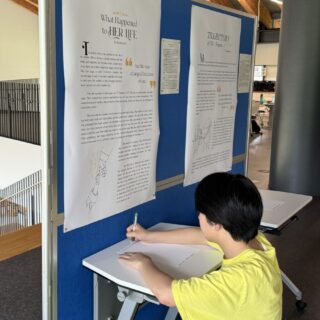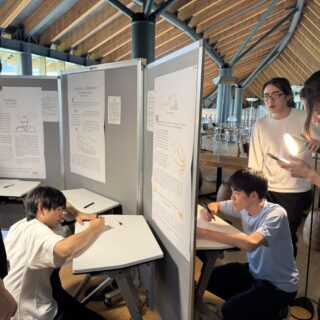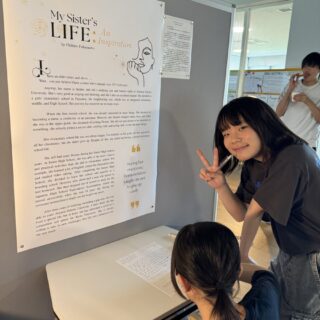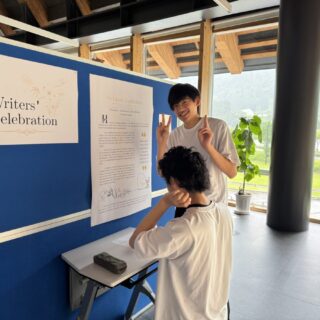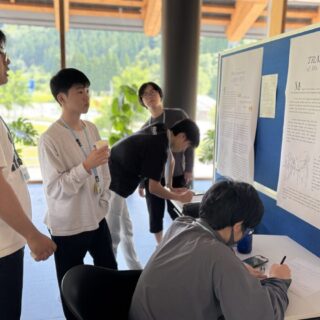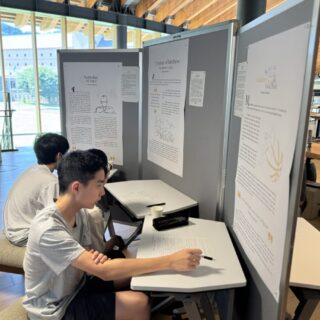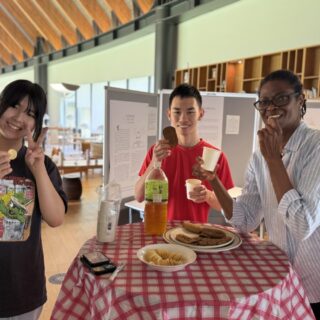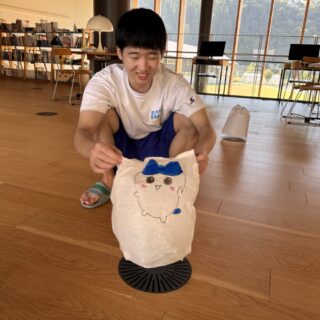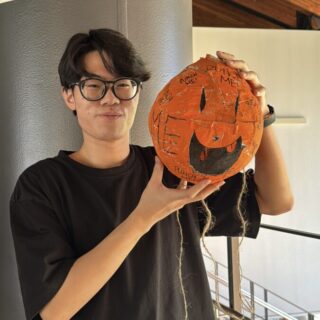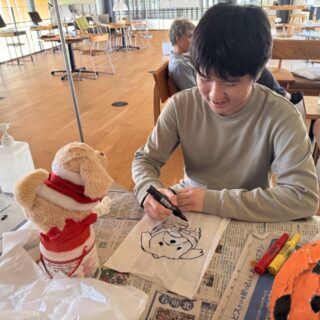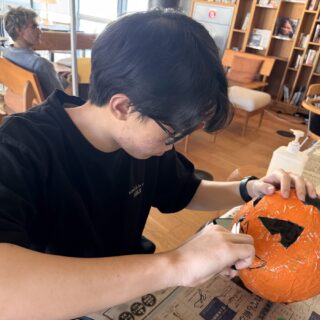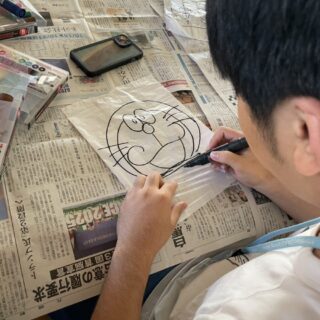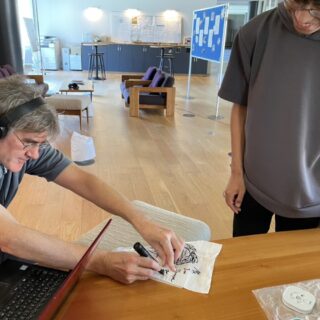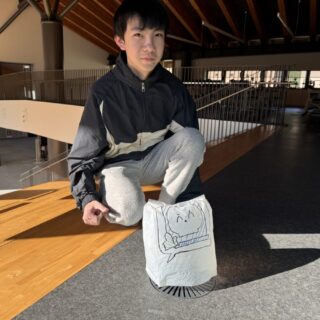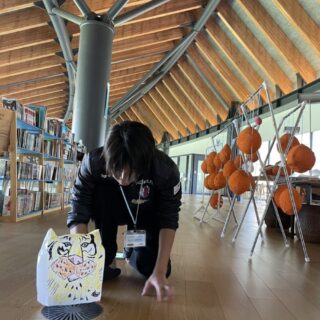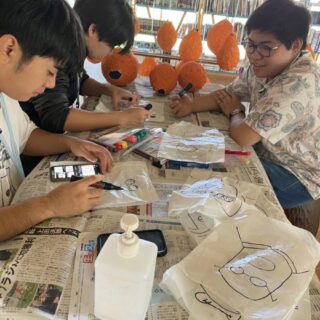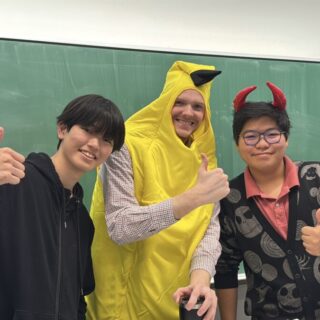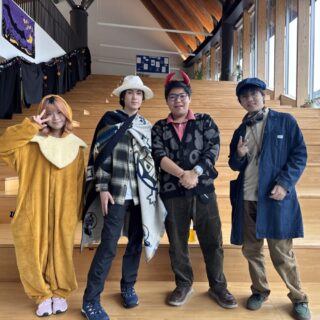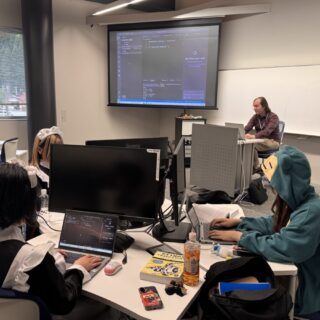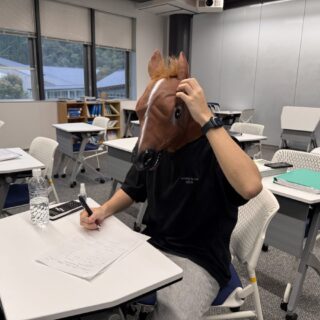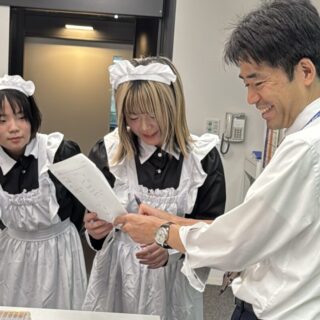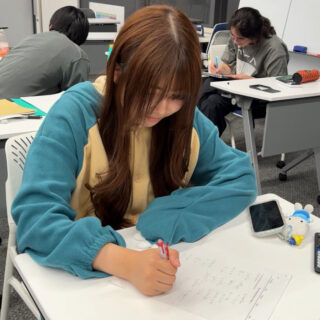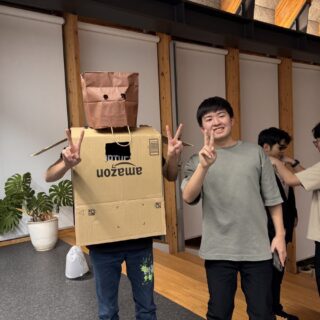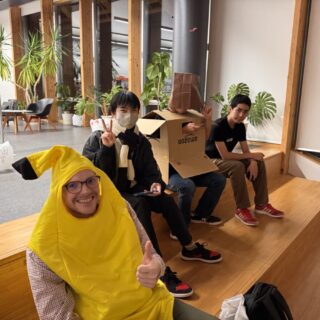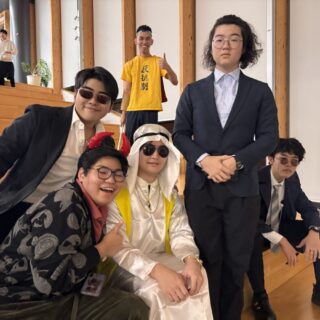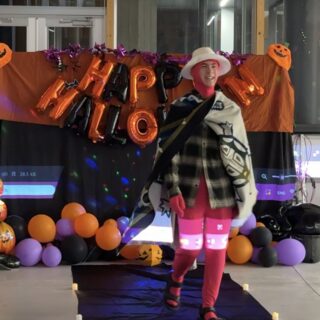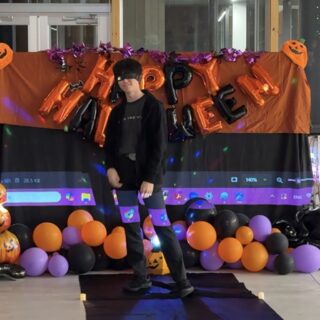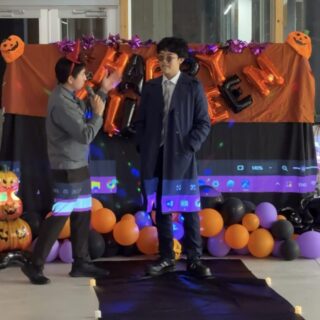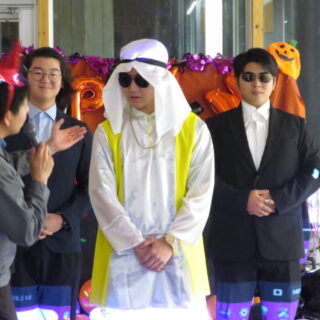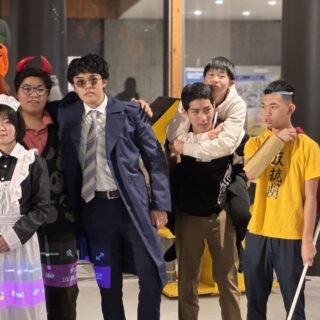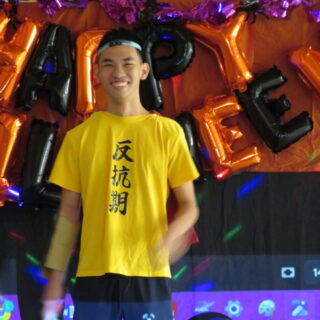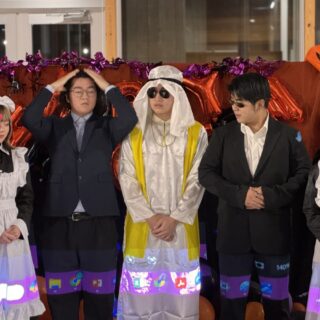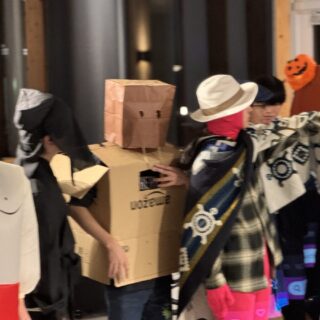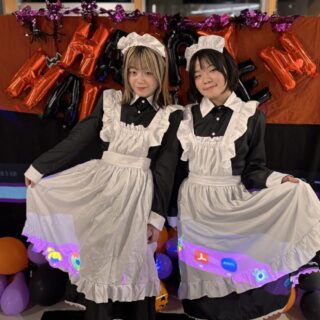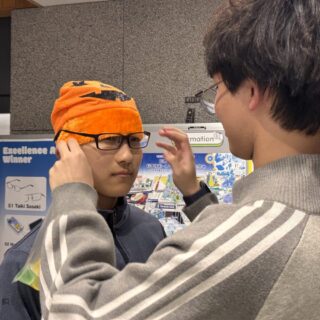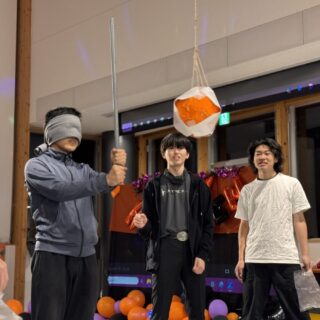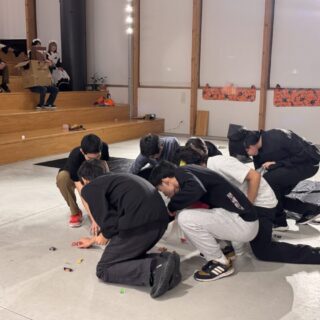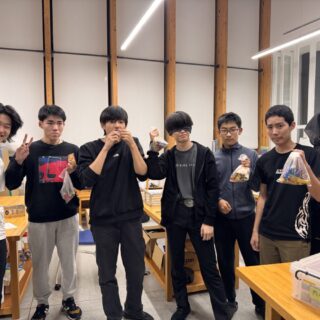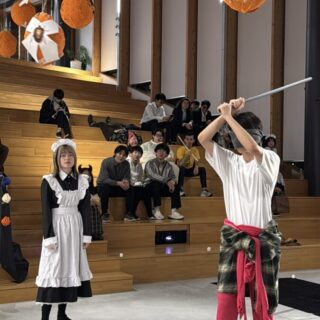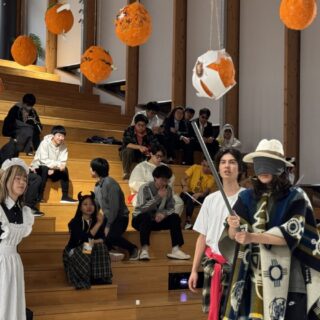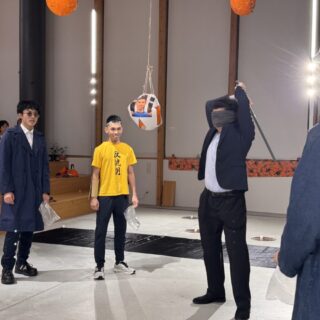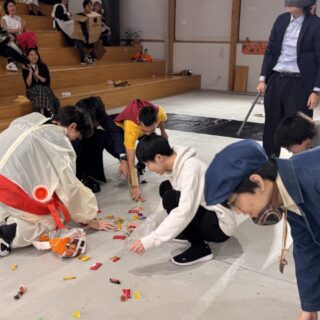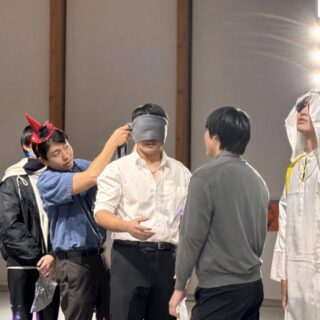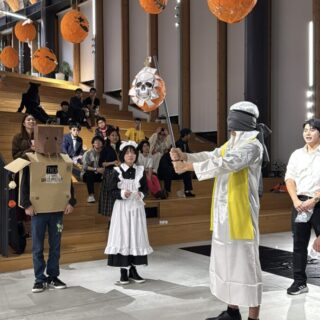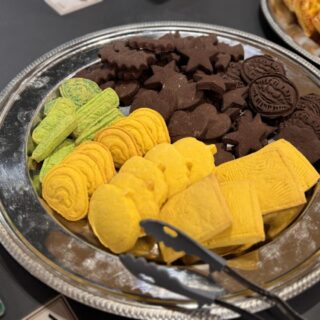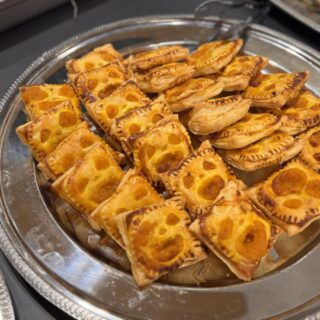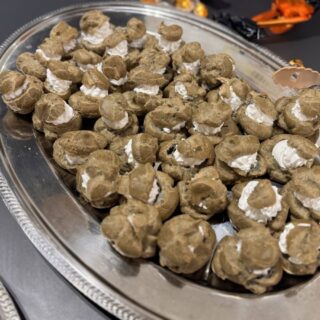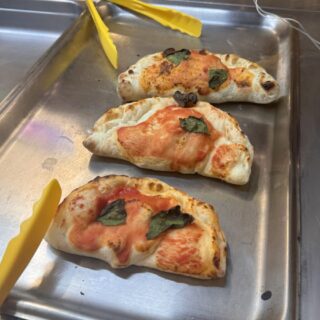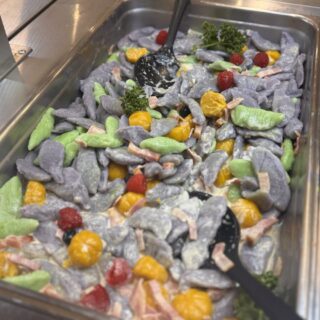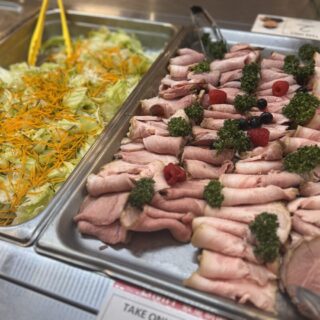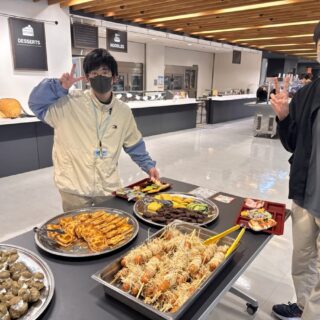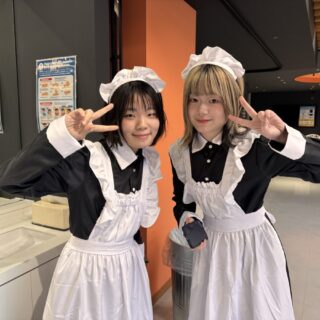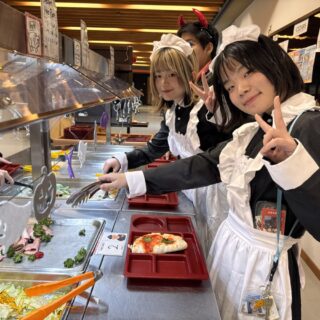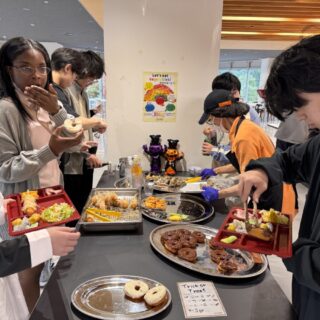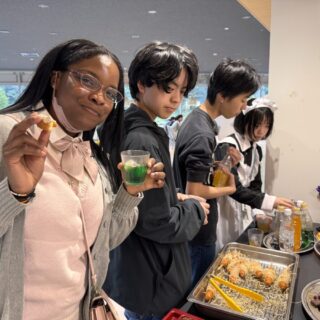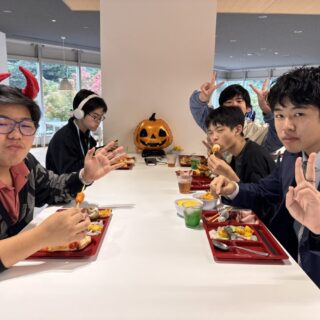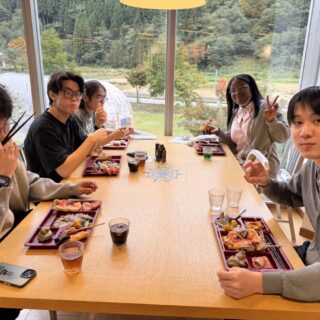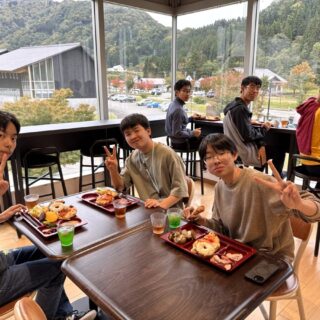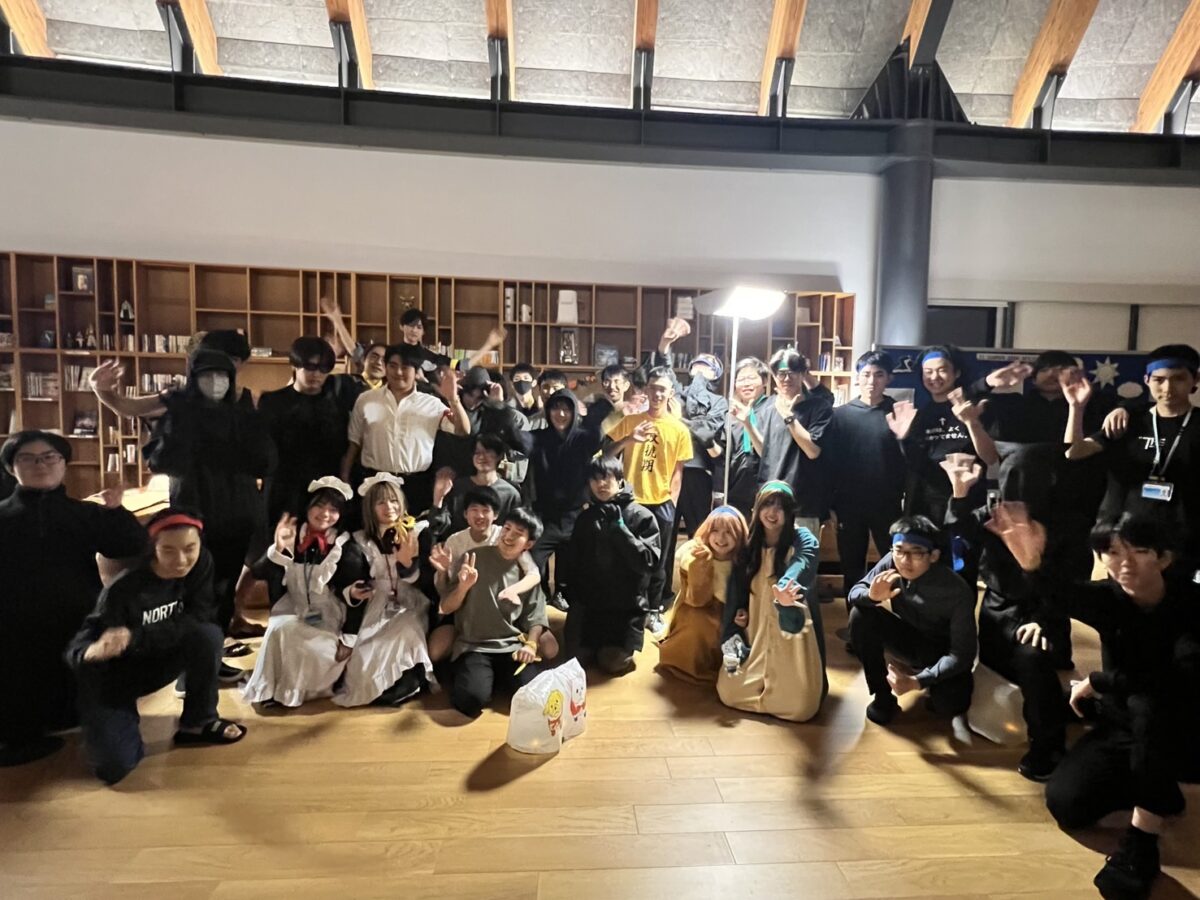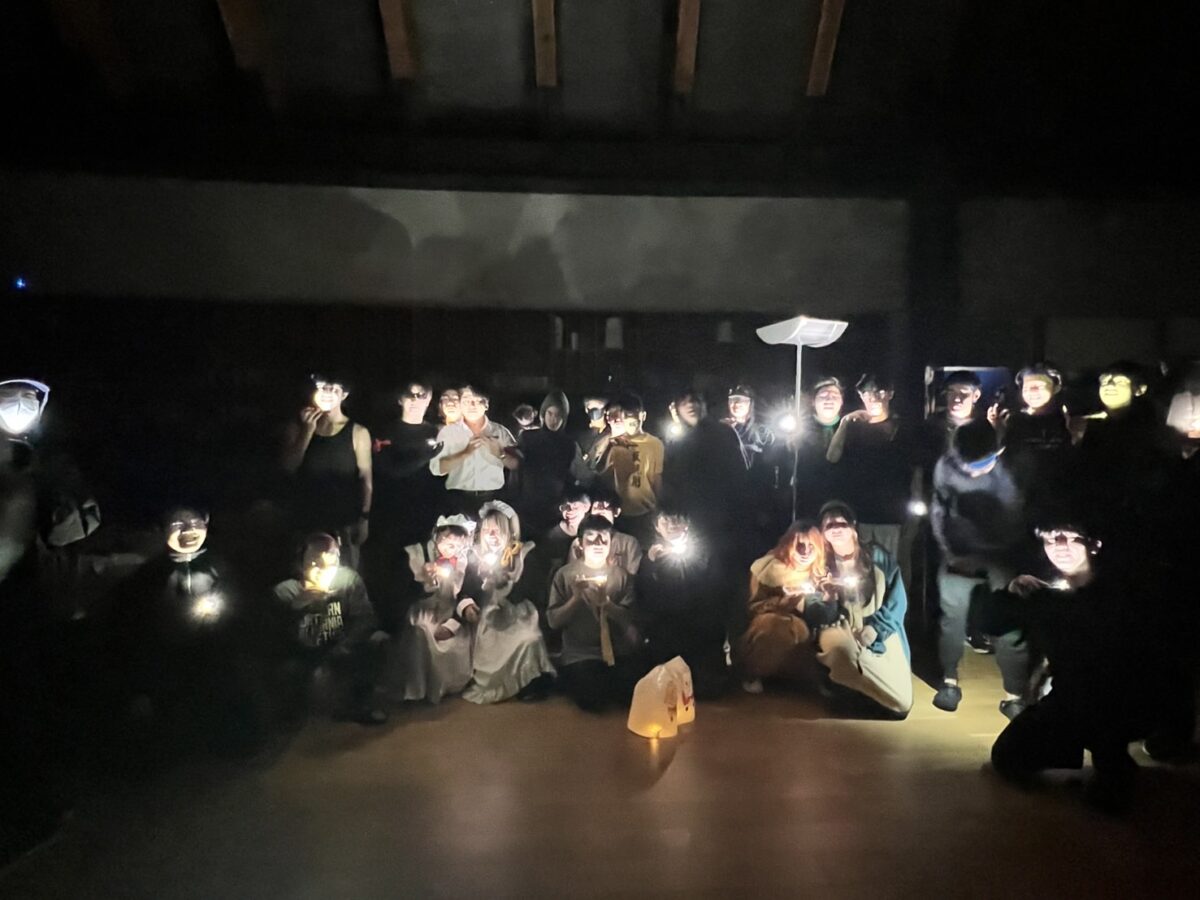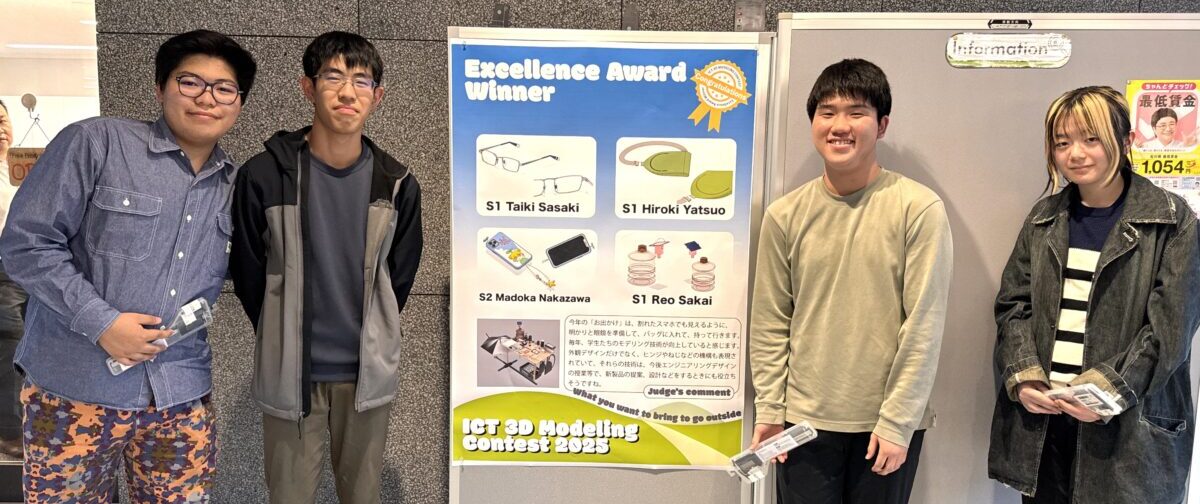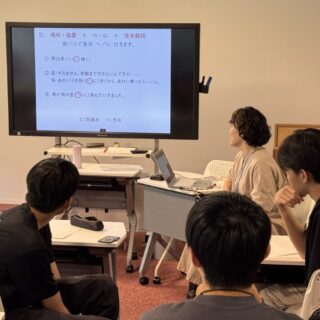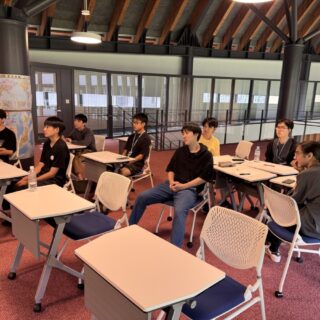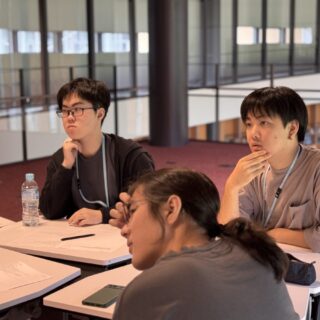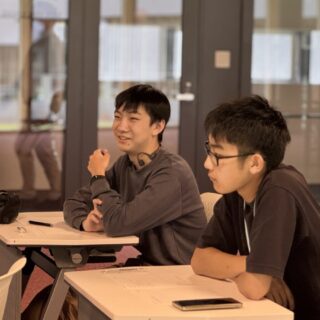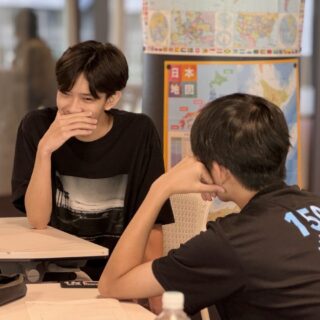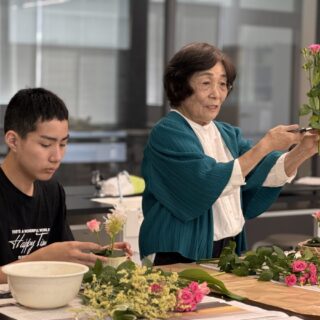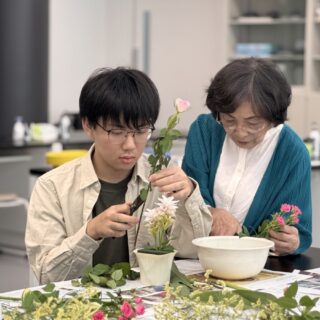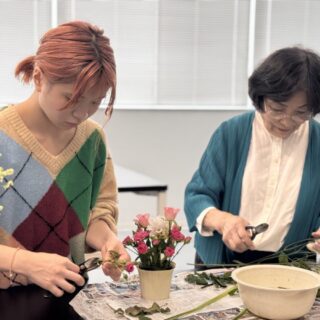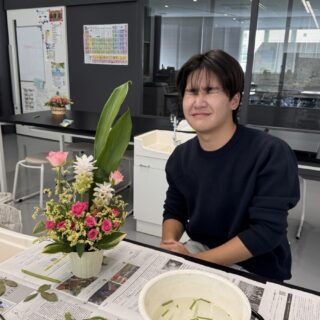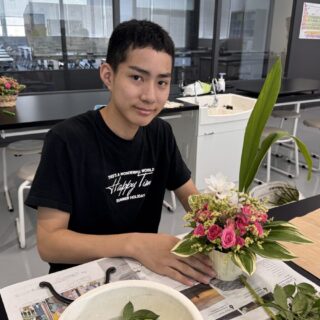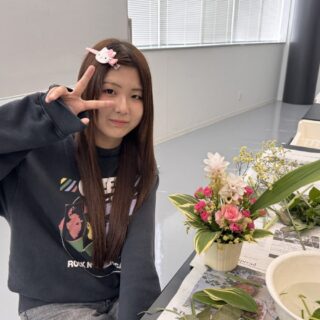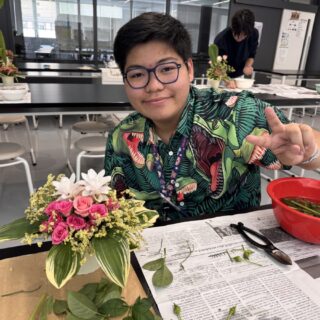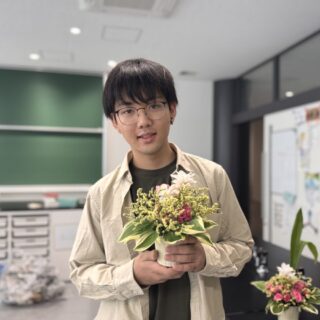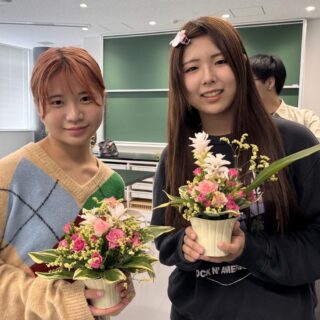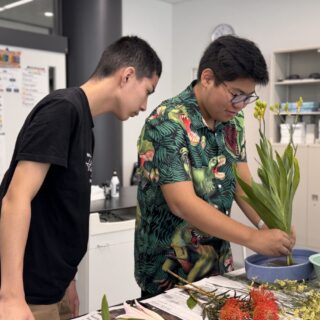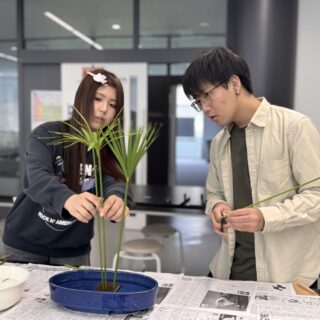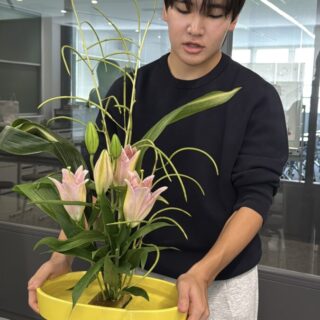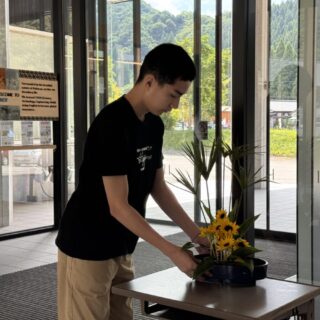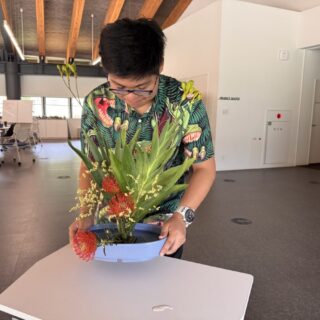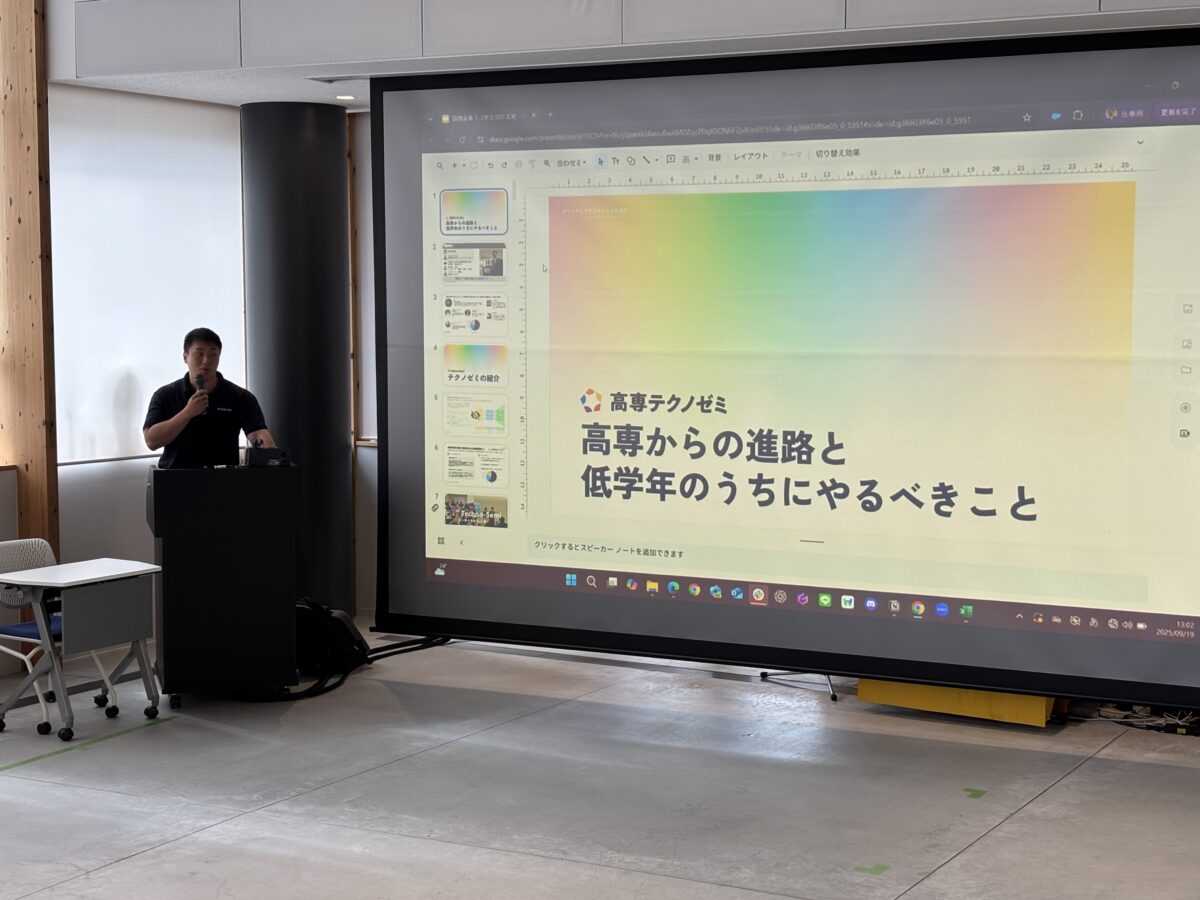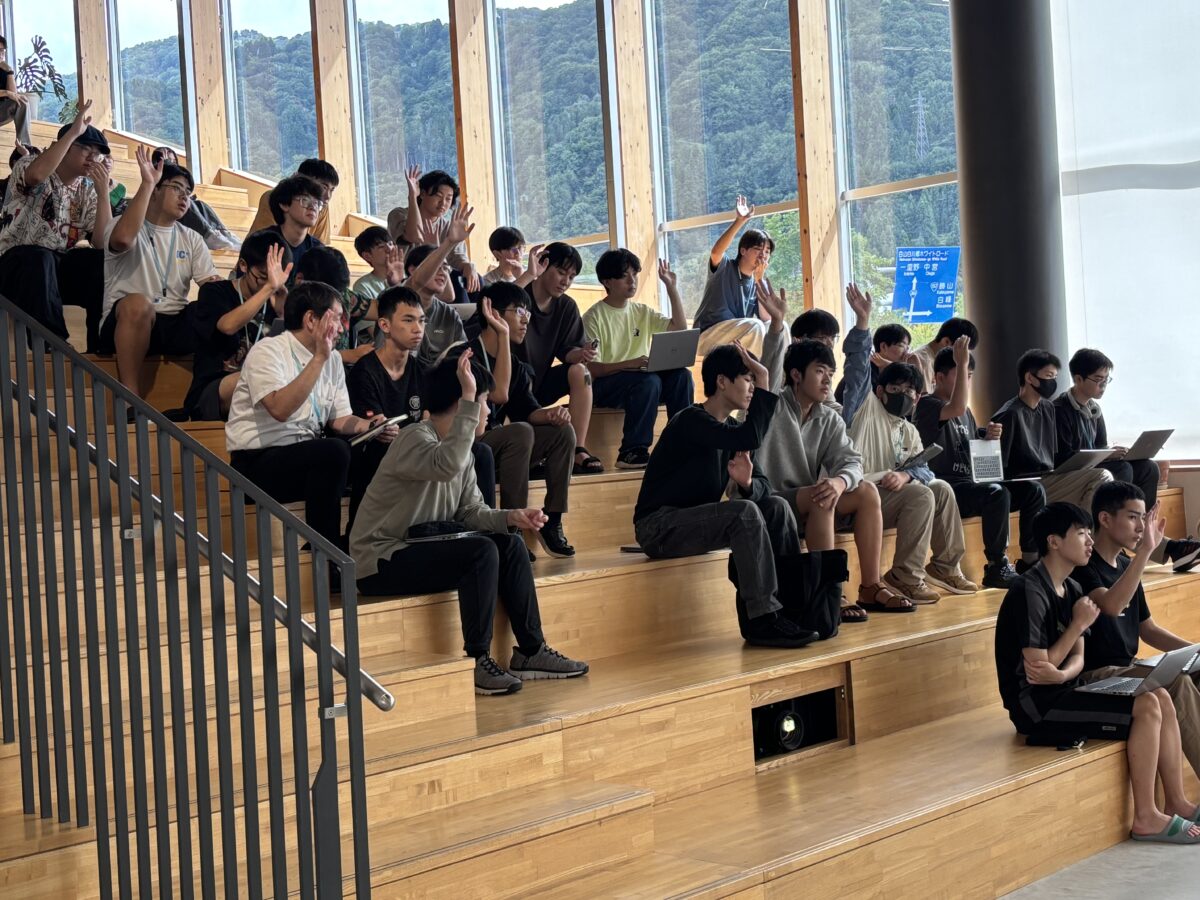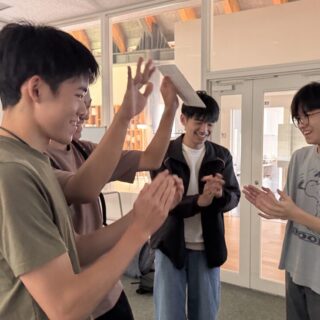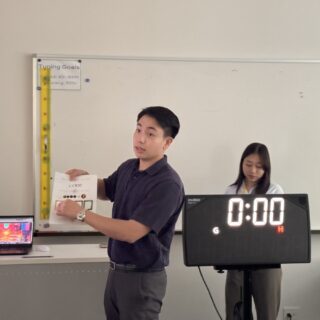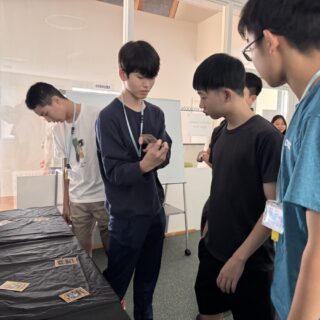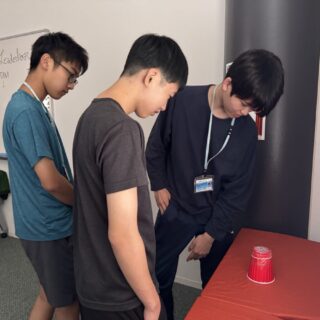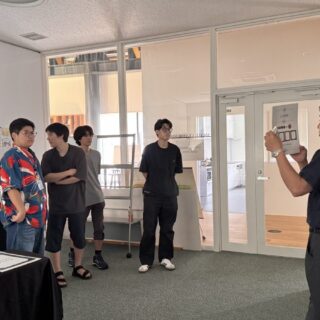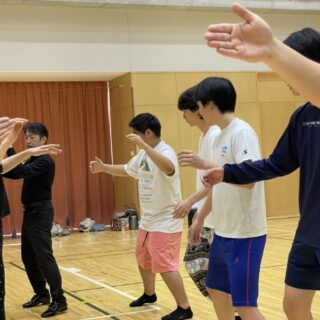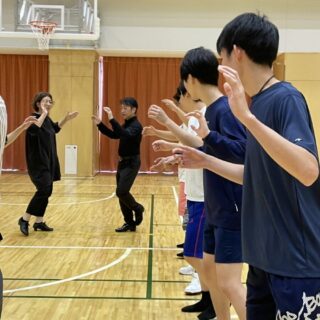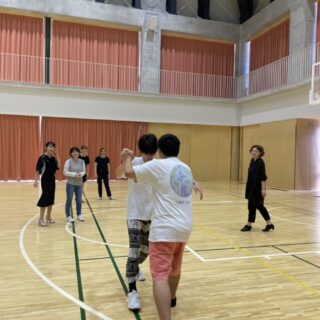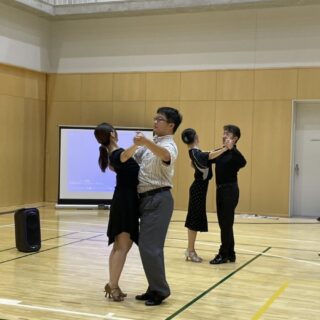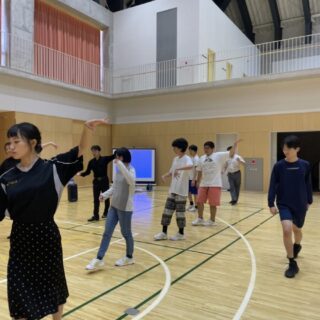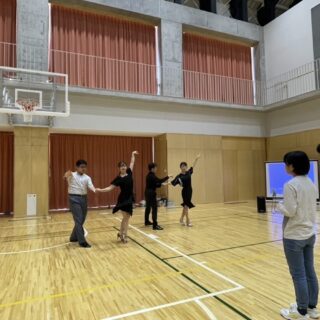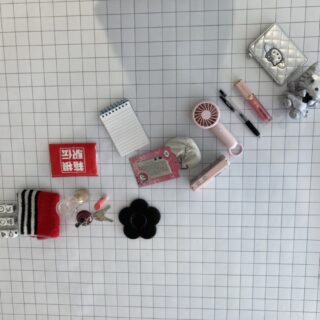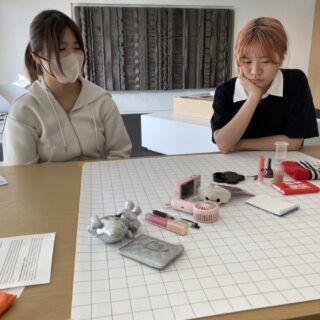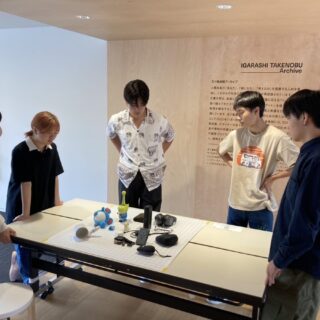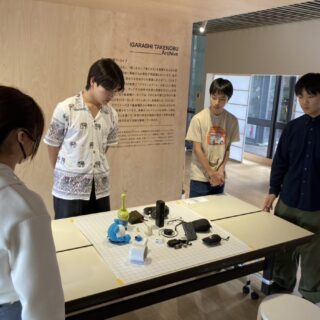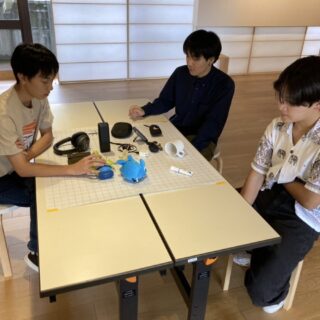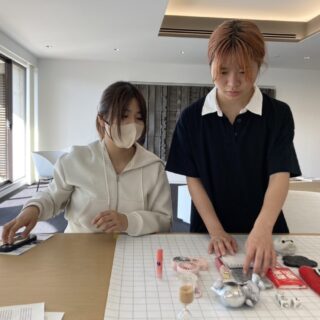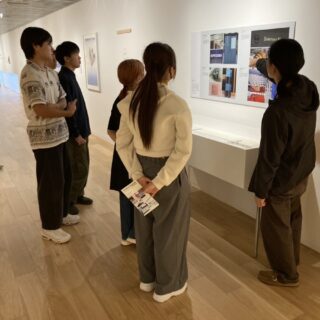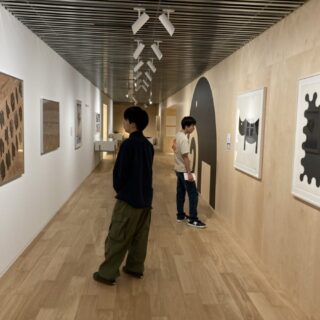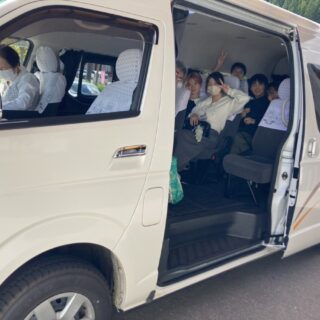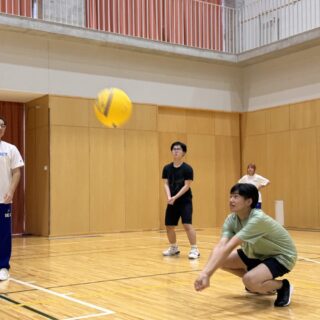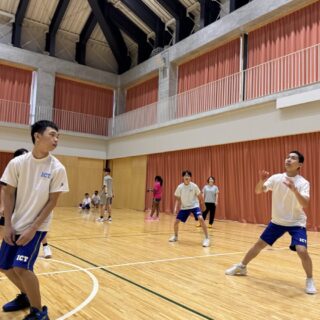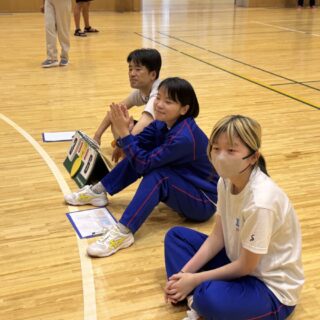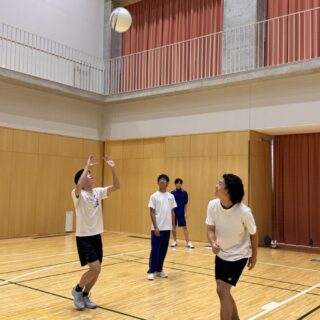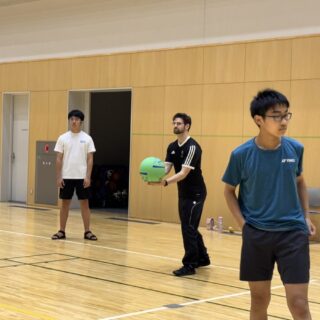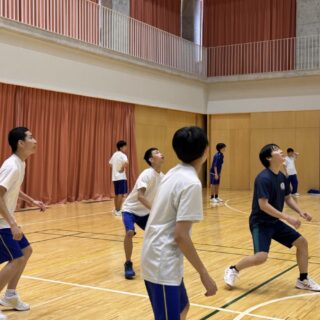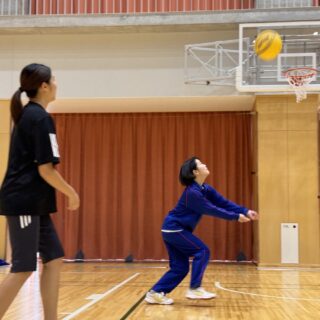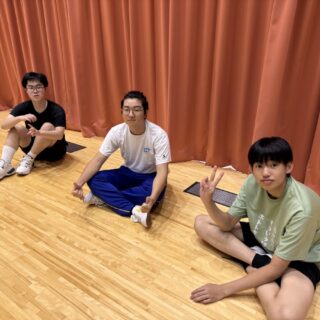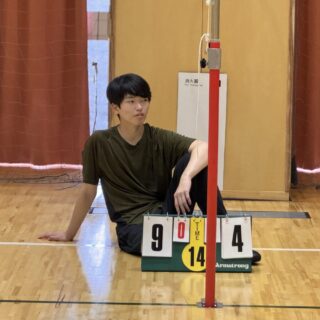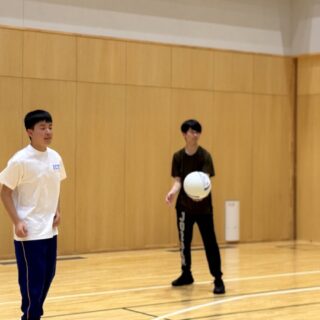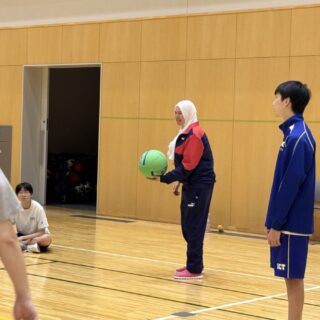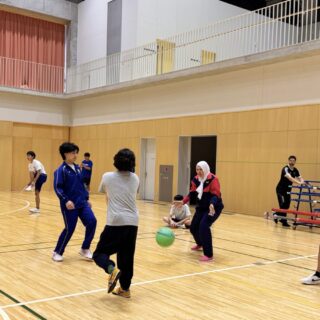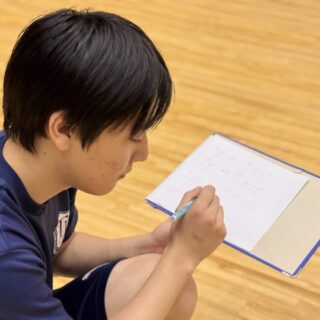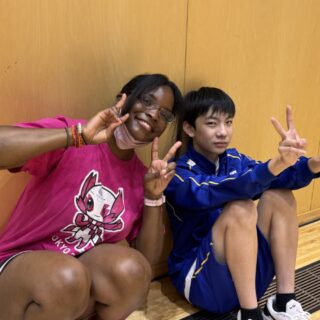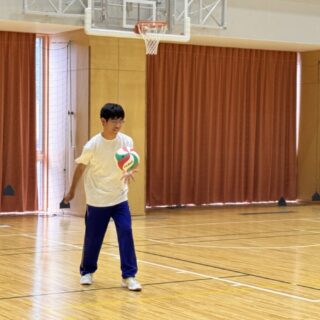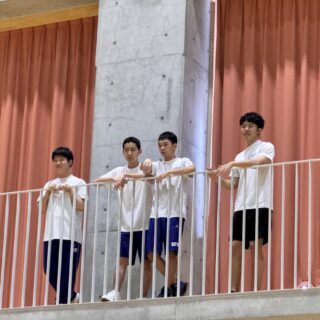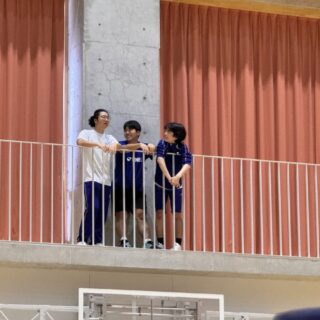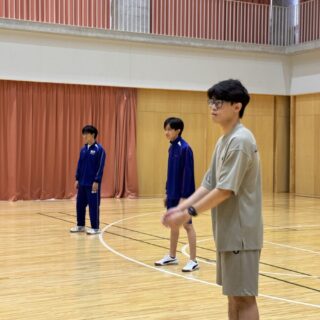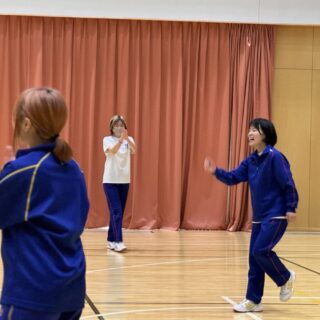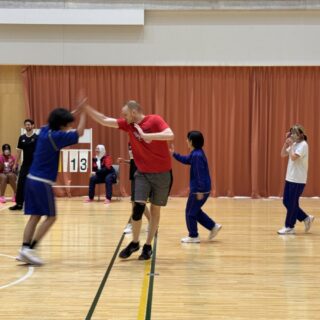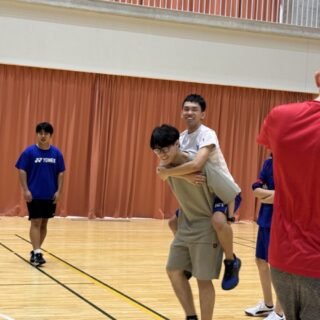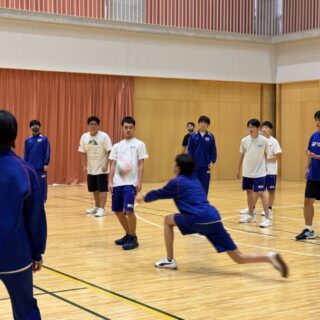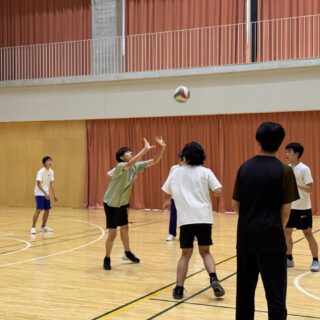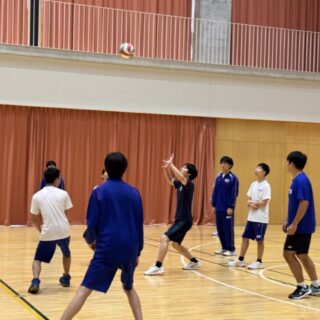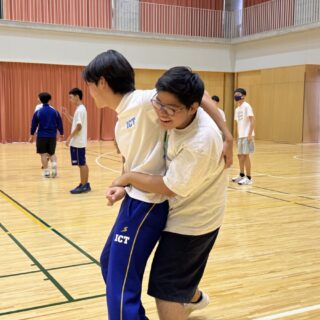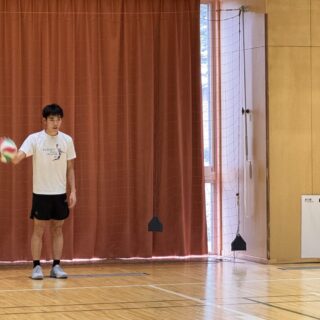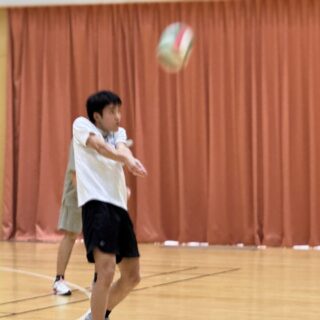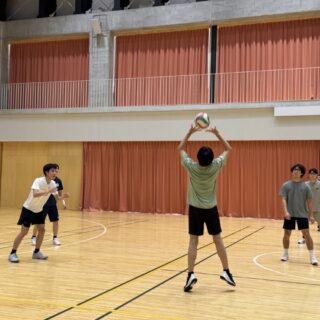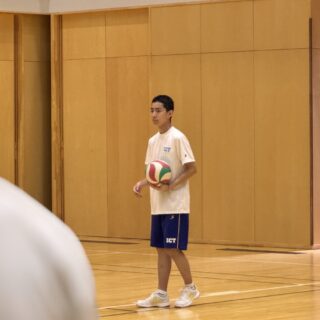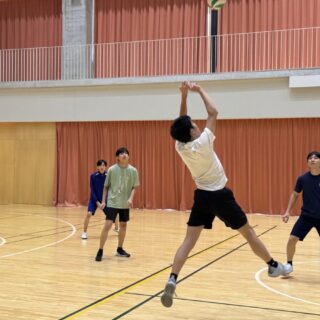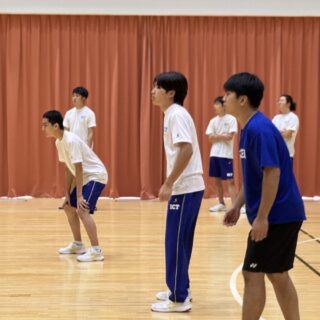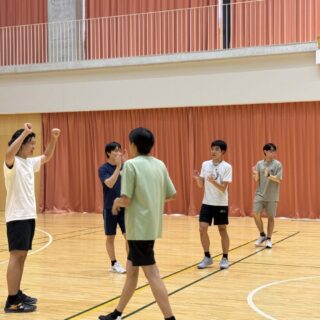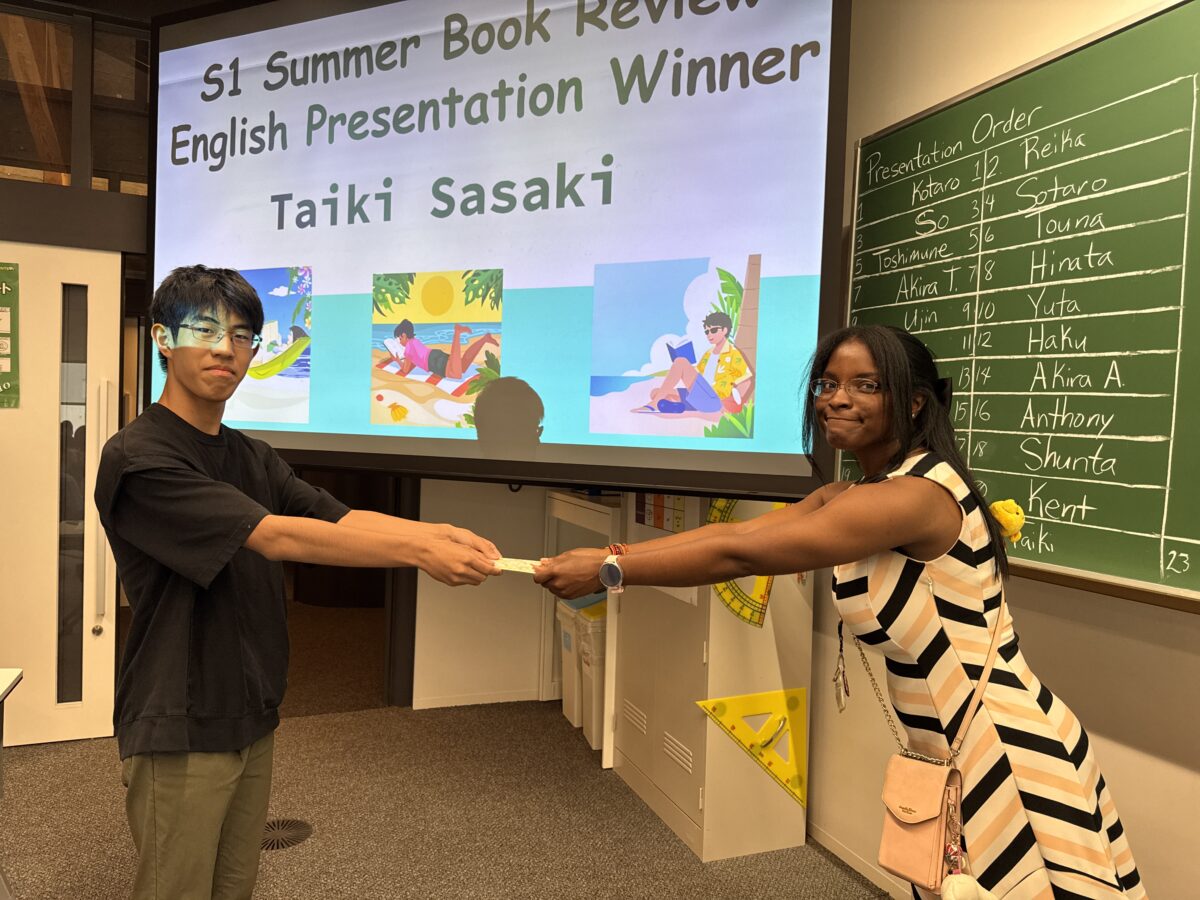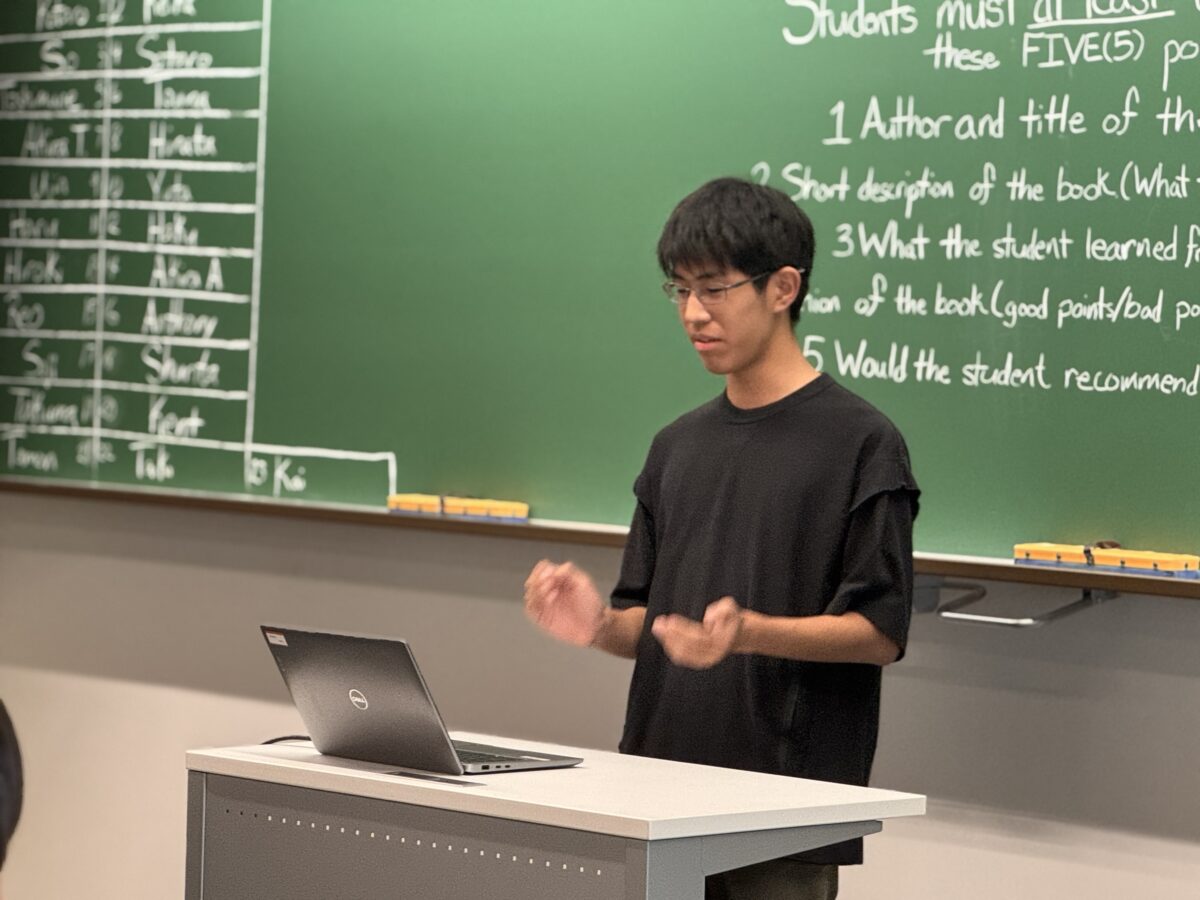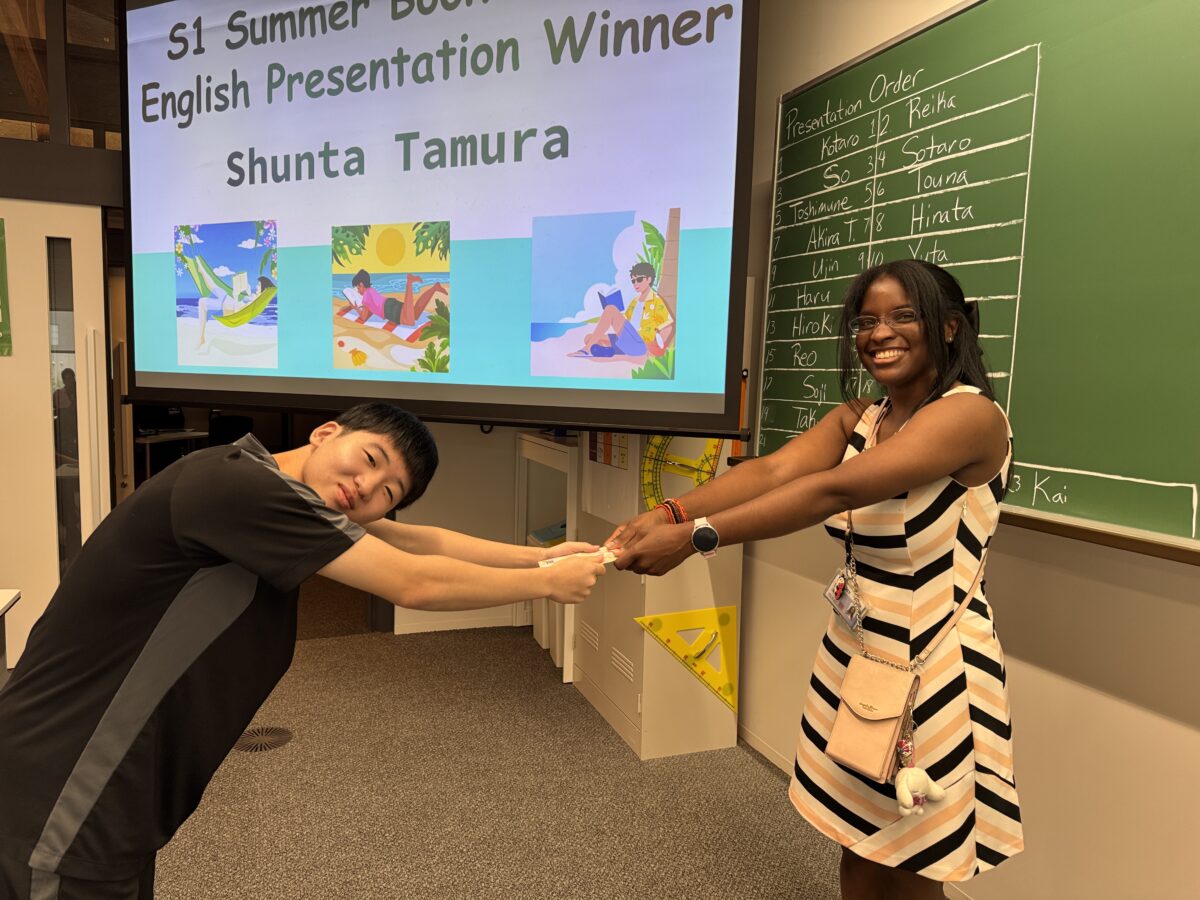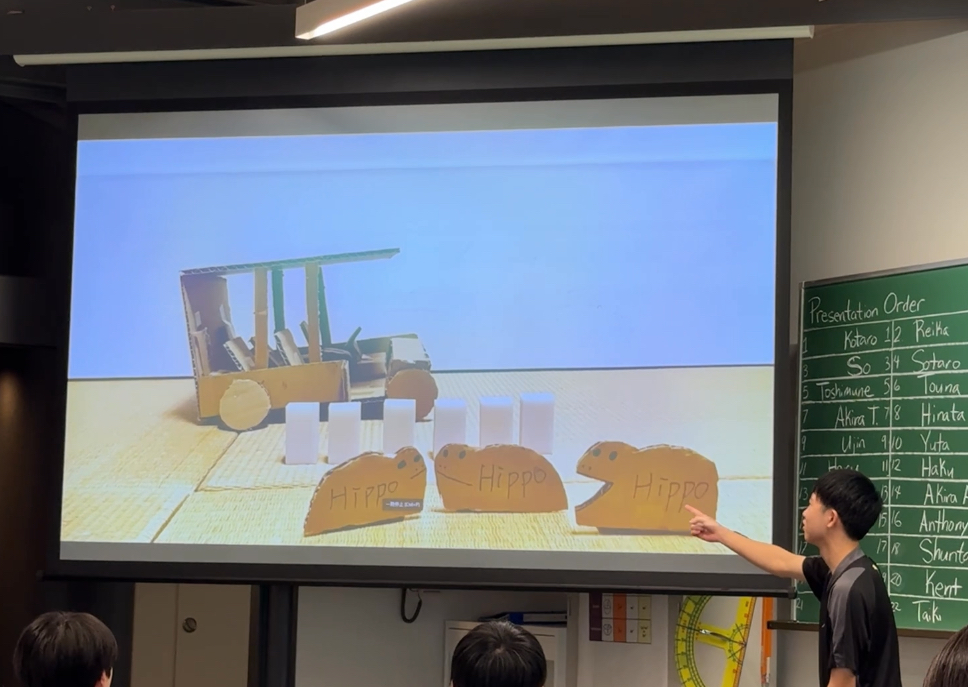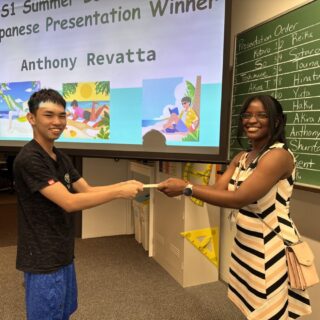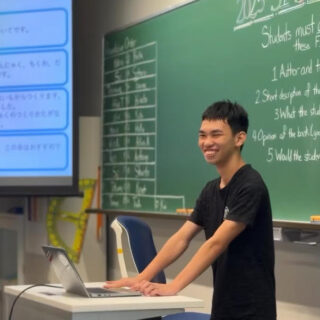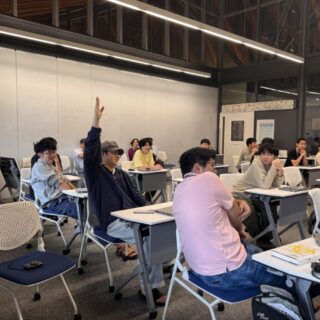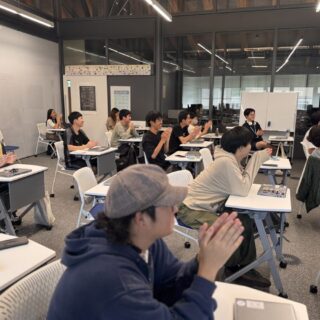Hakusanroku
白山麓キャンパス
こんにちは、英語科目担当のポーリン・ベアードです。
今学期、2年生のリーディング・ライティングの授業では、学生たちが「Profile Essay」を書くために、自分にとってインスピレーションを与えてくれる人物にインタビューを行いました。家族について書いた学生も多く、メモを取りながら文章を仕上げていきました。書く過程そのものも価値あるものでしたが、最後に行われた「Writer’s Celebration」で最も重要な気づきがありました。
学生たちは、自分の作品を英語と日本語で掲示板に貼り、他の学生や教職員に披露しました。その様子を見て、私は「家族の物語を書くこと」が、学生たちが作家として、また思考する人としてのアイデンティティを育むための特別な窓(きっかけ)となることに気づきました。
また、Writer’s Celebrationを実施したことで、学生たちが英語で自然に物語を用いながら、自分の価値観を探求できることがわかりました。祖父母や両親について語る中で、共通するテーマ―「優しさ」「強靭さ」「リーダーシップ」「創造性」「感情的な強さ」―が見えてきました。ある学生は、祖父が雨の日に傘を差し出してくれたという小さな行為が、どれほど心に響いたかを語りました。これらの物語は単なる子どもの頃の思い出ではなく、世代を超えて受け継がれる教訓であり、学生自身の声で語られたものです。これを読むと、ライティングは文法や構造だけではなく、「何が大切で、なぜそれが大切なのか」を理解することでもあると改めて感じます。
発表中、学生たちは教員や他の学生たちからのコメントを誇らしげに読みました。自分の人生から生まれた文章だからこそ、彼らはその作品に強い愛着を持っていました。多くの学生が「自分は意味(価値)のある物語を語れる」という発見をし、他の学生たちも「私たちはこんなにも共通点を持っている」ということに気づきました。例えば、ある学生が母親の前向きな姿勢について書いた文章は、別の学生が父親の思いやりについて語った文章と響き合います。学生全員が互いの文章を目にする機会はそう多くありません。だからこそ、こうした共有の時間は、ライティングを皆で分かち合えるものにし、ワークシートのような問題解決学習では決して生まれない一体感を育てます。
教員にとっても、学生がどのように考え、感じ、意思決定をしているかを垣間見る貴重な機会となりました。学生が何を大切にしているのか―友情、努力、優しさ、家族―を知ることで、今後の授業づくりにも役立ちます。
Writer’s Celebrationは、単なる課題を「仲間と価値観を共有できる体験」に変えました。そのことは、学生が自分の物語を語る時、彼らは「自分は書き手である」と認識し、私たち教員も学生をより深く理解できるのです。
【Writer’s Celebration】
一般的に、執筆における成果と努力を称え、作家同士が互いに励まし合うイベントです。学生の文章を発表することで、モチベーションの維持、学びの定着、文章力向上や、仲間や学校コミュニティと喜びを共有することで達成感を高めることを目的として実施されます。
ポーリン・ベアード
Celebrating the Hearts Behind the Writing and the Community that Grows From It
Pauline Baird an English teacher at ICT.
This semester, students in the 2nd Year reading and writing class interviewed people who inspired them to write a Profile Essay. Several students wrote about family members, took field notes, and drafted profile essays. The writing process itself was valuable; however, the most meaningful insights emerged during the “Writer’s Celebration” at the end. As students shared their work on bulletin boards for the entire school to read (in English and in Japanese), I began to see how family-story writing opens a unique window into students’ developing identities as writers and thinkers.
The celebration showed that students can naturally use narrative, in English, to explore personal values. As the students shared stories about grandfathers, mothers, and fathers, common themes appeared—kindness, resilience, leadership, creativity, and emotional strength. One student described how a grandfather’s small act—an umbrella given on a rainy day—touched him deeply. These stories were more than childhood memories. They were lessons passed across generations, told in the students’ own voices. Reading them reminds us that writing is not only about grammar or structure. It is also about understanding what matters and why.
During the celebration, students read comments by teachers and others with pride. They had ownership of their writing because it came from their lives. Many discovered that they could tell a meaningful story, and their classmates discovered how much we all have in common. For example, a student’s reflection on her mother’s positive mindset might echo another student’s story about his father’s compassion. It is not often that all students get to see other students’ writing. Thus, these shared moments make writing public and build a sense of community in a school that no worksheet can create.
For teachers, the celebration offered a rare window into how students think, feel, and make decisions. We learn what our students value—friendship, hard work, kindness, and family—and this helps us shape future lessons. A writer’s celebration turned a simple assignment into a shared human experience. It reminds us that when students tell their stories, they learn to see themselves as writers, and we learn to see students a little more clearly, too.
[Writer’s Celebration]
Generally, it is an event that celebrates achievements and efforts in writing, where writers encourage one another. The purpose is to publish student-writing to maintain motivation, reinforce learning, improve writing skills, and enhance the sense of accomplishment by sharing joy with peers and the school community.
Pauline Baird
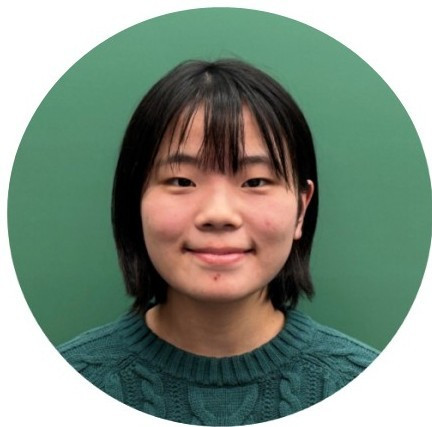 こんにちは、2年生の伊藤 綾音です。このジャーナルを読んでくれている皆さん、突然ですが質問です。「DMG森精機」という会社を知っていますか? 一言で説明すると、世界的に活躍する日本の大手工作機械メーカーです。今回、夏休みの期間中に、私がこのDMG森精機主催の「デジタルものづくり実践講座」に参加してきた内容について報告したいと思います。
こんにちは、2年生の伊藤 綾音です。このジャーナルを読んでくれている皆さん、突然ですが質問です。「DMG森精機」という会社を知っていますか? 一言で説明すると、世界的に活躍する日本の大手工作機械メーカーです。今回、夏休みの期間中に、私がこのDMG森精機主催の「デジタルものづくり実践講座」に参加してきた内容について報告したいと思います。
ではまず「DMG森精機」について。冒頭にも書きましたが、大手工作機械メーカーであり、主に、NC旋盤や5軸加工機、マシニングセンタなどの工作機械を製作・販売を行い、その実用性の高さから世界で活躍する会社です。
そのDMG森精機が開催しているの「デジタルものづくり実践講座」では、最新の工作機械と自動化システムについて学ぶことができます。対象は高専生で、リモート講義や二日間の実習授業を行います。実際に工場で働いているモノホンの工作機械が眼前1㎝……!は言いすぎですが、触れるほど近くで、じっくり観察し放題です。というか本当に触れられます!この講座の醍醐味は、自分の手で操作体験を行えるところですね!
操作体験を行う工作機械は、5軸加工機「DMU50 3rd Generation」です。ドリルと加工を行う材料を、X・Y・Z方向と二つの回転からなる5軸で回し、あらゆる形を作り出します。5軸加工機のドリルは自在に動き回るので、さながらSF映画に出てくるロボットアームのようでした。自分で設定した値の位置にびしっと動き、正確に金属を削ってくれるととても気持ちがいいです。
次に、自動化システムについて……と言いたいところですが、あまりネタバレしすぎるのも面白くないので、続きはぜひ「デジタルものづくり実践講座」で体験してみてください。しかもこの講座、交通費無料!ホテル代無料!全国各地で開催されており、気軽に応募できるのもうれしいところ。実際に製造を行っている会社の方とお話しできる機会だって、そうそうないと思うので本当におすすめです!
以上、DMG森精機潜入レポートでした。
また次の機会に会えることを楽しみにしています。さようなら!
伊藤 綾音
 Hello, this is Ayane ito, a 2nd year student. Let me begin with a quick question — have you ever heard of DMG MORI?
Hello, this is Ayane ito, a 2nd year student. Let me begin with a quick question — have you ever heard of DMG MORI?
In short, DMG MORI is one of Japan’s leading machine tool manufacturers with a strong global presence. My name is Ayane Ito. I am a 2nd year student, and during the summer vacation, I participated in the Digital Manufacturing Hands-on Seminar hosted by DMG MORI during this summer break. I would like to share what the experience was like.
First, a brief introduction to DMG MORI. As mentioned above, it is a major manufacturer of machine tools, and many of you may already be familiar with the name. The company designs and produces tools such as Numerical Control lathes, 5-axis machining centers, and milling machines, which are used worldwide thanks to their outstanding practicality and precision.
The Digital Manufacturing Hands-on Seminar organized by DMG MORI offers participants the opportunity to learn about the latest machine tools and automation systems. The program is open to technical college students and includes both online lectures and a two-day in-person practical session. Participants can observe real, working industrial machines up close — close enough to touch them. For me, the highlight of the program was being able to operate the machines myself.
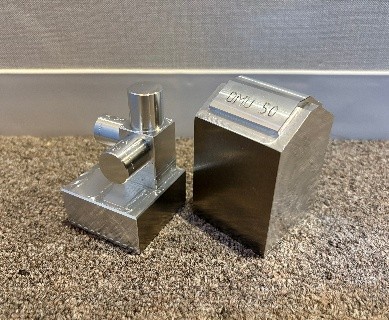

The machine we used during the workshop was the 5-axis machining center “DMU50 3rd Generation.”
It moves the drill and the workpiece along the X, Y, and Z axes, combined with two rotational axes, to create complex shapes with remarkable precision. The drill head moves freely, almost like a robotic arm straight out of a science fiction film. It was incredibly satisfying to see it move precisely to the programmed coordinates and cut the metal exactly as intended.
As for the automation systems we learned about — I won’t spoil too much here. I highly recommend experiencing it for yourself by joining the Digital Manufacturing Hands-on Seminar. What’s more, participation is free of charge, with transportation and accommodation expenses covered. The seminar is held in various locations across Japan, making it accessible for students nationwide. It is also a valuable opportunity to interact directly with professionals working in the manufacturing industry.
That concludes my inside report on DMG MORI.
Thank you for reading, and I look forward to sharing more next time!
Ayane ito
 こんにちは!白山麓高専事務室の間加田 侑里です。今回は「ハロウィンイベント」について紹介します。
こんにちは!白山麓高専事務室の間加田 侑里です。今回は「ハロウィンイベント」について紹介します。
ハロウィンの季節になると、白山麓キャンパスの校舎は学生とラーニングメンターによってハロウィン仕様に飾り付けが行われます。手作りのジャック・オー・ランタンやエアコン吹き出し口へのイラスト入りビニール袋の貼り付けなど、遊び心あふれるデザインで館内は華やかになりました。
2025年10月31日(金)、ハロウィン当日、数名の学生たちや教員たちはハロウィンの仮装をして授業を行いました。学生たちはポケモンの衣装やメイド服、カウボーイなど、教員は日本の制服やバナナの衣装を身にまとい、ユニークなスタイルで授業が進められました。
昼食にはハロウィン特別メニューが提供され、吸血鬼のごちそうピザ(中にチーズが入っていてとても美味しかったです!)、芋虫の形をした不気味な色のパスタ、さらに約10種類のお菓子が取り放題で並び、学生たちは楽しそうに食事を満喫していました。
授業が終了するとともに、さらに仮装をする学生たちが増えました。馬の被り物をして相撲のコスチュームを着たり、ボディーガードを従えた石油王に扮したり、赤色の洋服をマント風にアレンジして個性的な仮装をしたりと、思い思いのスタイルで登場しました。パレードでは、ステージの上で堂々とポーズを決め、観客を魅了しました。時には笑いが起きたりして終始賑やかな雰囲気で行われました。
その後、ピニャータが行われました。ピニャータとは、メキシコのお祝い事で有名な行事で、くす玉を叩いて割るゲームです。目隠しした学生は周囲の声を参考にしながら前後左右に進み、くす玉を叩き割りました。くす玉に入ったお菓子が飛び散る瞬間は歓声が上がりました。
ハロウィン特別メニュー
また、ラーニングセッション(夜の学校)の時間には「校内かくれんぼ」が開催されました。学生たちは4つのグループに分かれ、各グループが順番に鬼となり、他のグループは隠れます。館内の証明を全て消し、鬼は携帯電話のライトを頼りに隠れている学生を探しました。時間制限が設けられ、鬼は教室や実験室、トイレ、棚の中まで隅々と捜索しました。隠れている学生たちは見つからないよう静かにしていましたが、鬼に見つかった瞬間、思わず叫び声をあげる学生もいました。制限時間内に見つからなかった学生には、勝者としてお菓子がプレゼントされました。
今回のハロウィンイベントは、学生と教員が一体となって楽しむ貴重な機会となりました。校舎全体が季節の雰囲気に包まれ、笑顔が広がる一日でした。
間加田 侑里

Hello! I’m Yuri Makada from the Hakusanroku office. Today, I’d like to introduce this year’s Halloween Events.
As the Halloween season approached, the Hakusanroku campus building was festively decorated by students and learning mentors. They created handmade Jack-o’-lanterns and added playful touches, such as illustrated plastic bags attached to air conditioner vents, brightening up the entire building.
On Friday, October 31st, 2025, the day of Halloween, several students and faculty members attended classes in costume. Students dressed as Pokémon characters, maids, cowboys, and more, while teachers appeared in Japanese school uniforms or even banana costumes, creating a unique and lively atmosphere in the classroom.
For lunch, a special Halloween menu was served such as Vampire’s Feast Pizza (stuffed with cheese and absolutely delicious!), creepy-colored pasta shaped like caterpillars PLUS about 10 varieties of candy available for everyone to enjoy. Students had a great time savoring these treats.
As the classes came to an end, even more students joined in with creative costumes. One student a horse headpiece paired with a sumo outfit, another dressed up as an Arabian sheik accompanied by his bodyguards, and another student transformed ordinary red clothes into cape-like design for unique look. During the Halloween parade, students struck confident poses on stage, captivating the audience. Laughter and cheers filled the atmosphere, making the event lively from start to finish.
After the parade, the learning mentors held a Piñata game, a tradition from Mexican celebrations where participants break a decorated container to release treats. Blindfolded students relied on the voices of their peers to guide them as they swung at the piñata. When the container finally broke and candy scattered everywhere, the room erupted in excitement.
Later, during the Learning Session (Night School), learning mentors hosted a Campus Hide-and-Seek game. Students were divided into four groups, taking turns as “seekers” while the others hid. All the lights in the building were turned off, and seekers used their phone flashlights to search classrooms, labs, restrooms, and even inside shelves. Hidden students tried to stay silent, but some couldn’t help screaming when discovered! Those who remained hidden until the time limit received candy as a prize.
This year’s Halloween event was a wonderful opportunity for students and faculty to come together and have fun. The entire campus was filled with seasonal spirit, and smiles spread through classes, meals, and activities all day long.
Yuri Makada
 デザイン&ファブリケーション部顧問の林 道大です。本年度も夏季休暇中の課題として、3DCADモデリングに学生たちが取り組みました。今年のテーマは「お出かけに持って行くもの」で、1・2年生の学生たちから30点以上の作品が提出されました。提出された作品はさまざまなジャンルのものが網羅されており、全部を持ってお出かけすれば、楽しく、便利な遠足となりそうです。提出された全てを審査員たちで審査を行い、優秀賞4作品を選出しました。
デザイン&ファブリケーション部顧問の林 道大です。本年度も夏季休暇中の課題として、3DCADモデリングに学生たちが取り組みました。今年のテーマは「お出かけに持って行くもの」で、1・2年生の学生たちから30点以上の作品が提出されました。提出された作品はさまざまなジャンルのものが網羅されており、全部を持ってお出かけすれば、楽しく、便利な遠足となりそうです。提出された全てを審査員たちで審査を行い、優秀賞4作品を選出しました。
優秀賞となった作品について、それぞれ解説していきます。
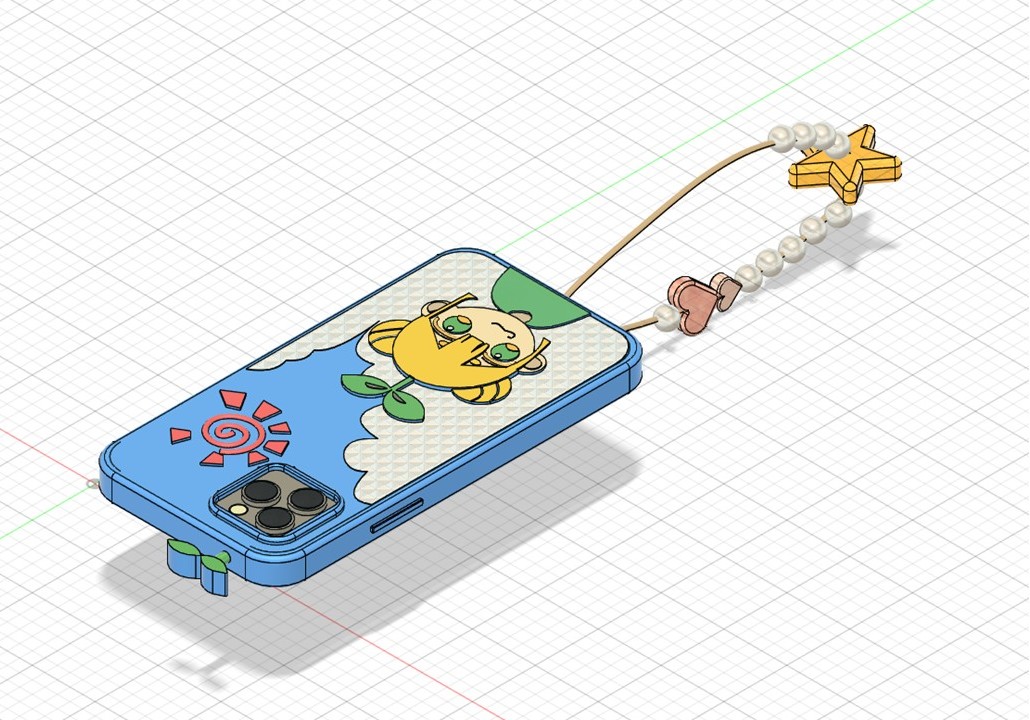 まず、2年生中澤 円香さんの作品「わたしのスマホ」です。幾何学的な形状としてはシンプルなスマホをモデリングしていますが、かなりデコっています。円弧や直線の組み合わせで、かわいらしいキャラクターをうまく再現しています。ストラップのビーズの表現も上手です。輝く太陽もCADでは難しいと思われる手書き風にモデリングされています。画面が割れているところまで表現しているのも、手が込んでいました。
まず、2年生中澤 円香さんの作品「わたしのスマホ」です。幾何学的な形状としてはシンプルなスマホをモデリングしていますが、かなりデコっています。円弧や直線の組み合わせで、かわいらしいキャラクターをうまく再現しています。ストラップのビーズの表現も上手です。輝く太陽もCADでは難しいと思われる手書き風にモデリングされています。画面が割れているところまで表現しているのも、手が込んでいました。
2年生中澤さんコメント
制作時間:1日少しずつ作業して、1週間くらいかかりました。
こだわり:カメラレンズの周辺やキャラクターの表情など細かいところまでモデリングしました。やっぱり、割れたスクリーンが一番のポイントです。
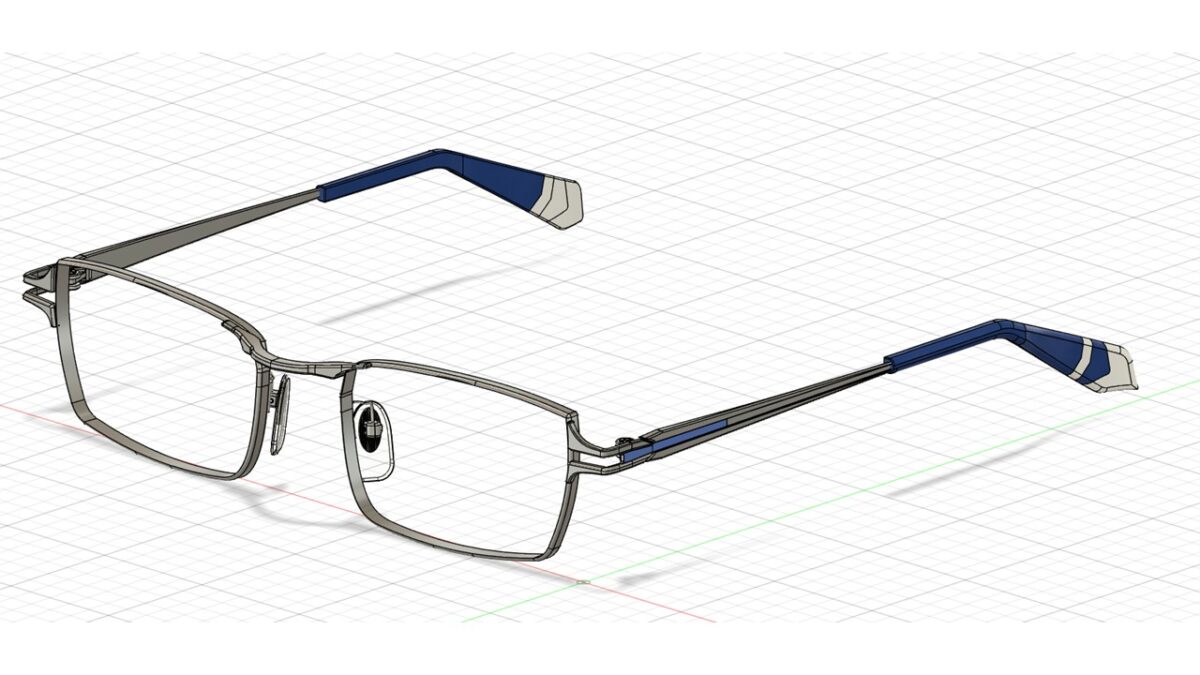
次は、1年生笹木 大暉さんの作品「わたしの眼鏡」です。とてもリアルにモデリングされた眼鏡です。眼鏡屋さんのカタログに載っていそうです。全体の形状だけでなく、リム、ブリッジ、智、鼻パッド、丁番、テンプルまでしっかりと再現されています。複雑な曲面で構成されているパーツも、とても丁寧に形状が再現されています。この眼鏡をかけたら、少し賢くなるような気がするのは、制作者の思いが作品に反映されているのでしょうか。
1年生 笹木さんコメント
制作時間:6時間くらいだと思います。
こだわり:自分が使っている眼鏡を良く観察しました。特にレンズをはめるリムの立体感に注意してモデリングしました。
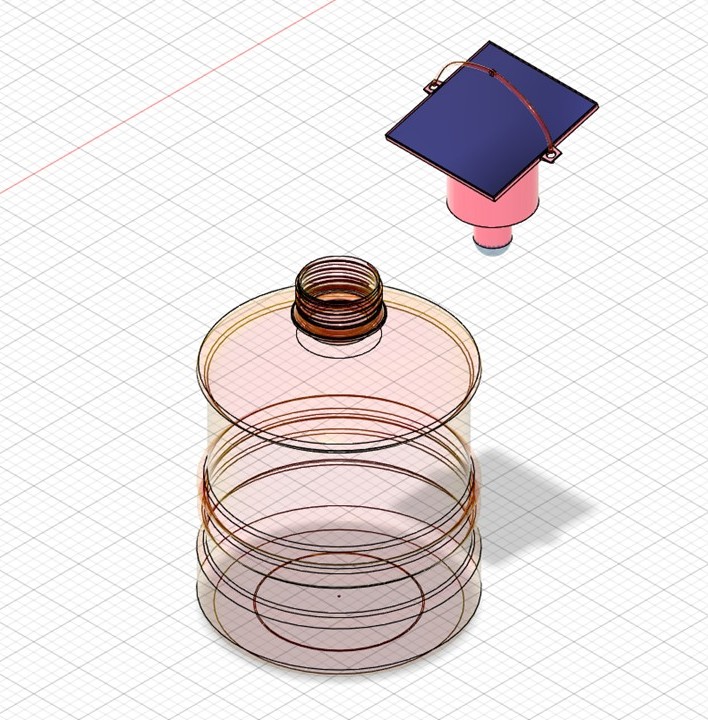
次は、1年生 坂井 麗央さんの作品「わたしのランタン」です。全体の形状をバランス良くモデリングしています。灯したり、消したりする機構や、燃料を入れる部分、ネジ締めする蓋の部分も、その機能が説明できるように丁寧に作成しています。薄暗いテントの中で炎がゆらゆらと揺らめく様子をCGで再現したら、とても美しい動画となるのではないでしょうか。CG(コンピュータグラフィックス)コンテストでも上位入賞できると思います。
1年生 坂井さんコメント
制作時間:3時間くらいの作業を2、3日続けました。
こだわり:テクスチャの設定や蓋部分のねじ形状にこだわりました。蓋部分は3Dプリントしたら実際の蓋として使えるはずです。
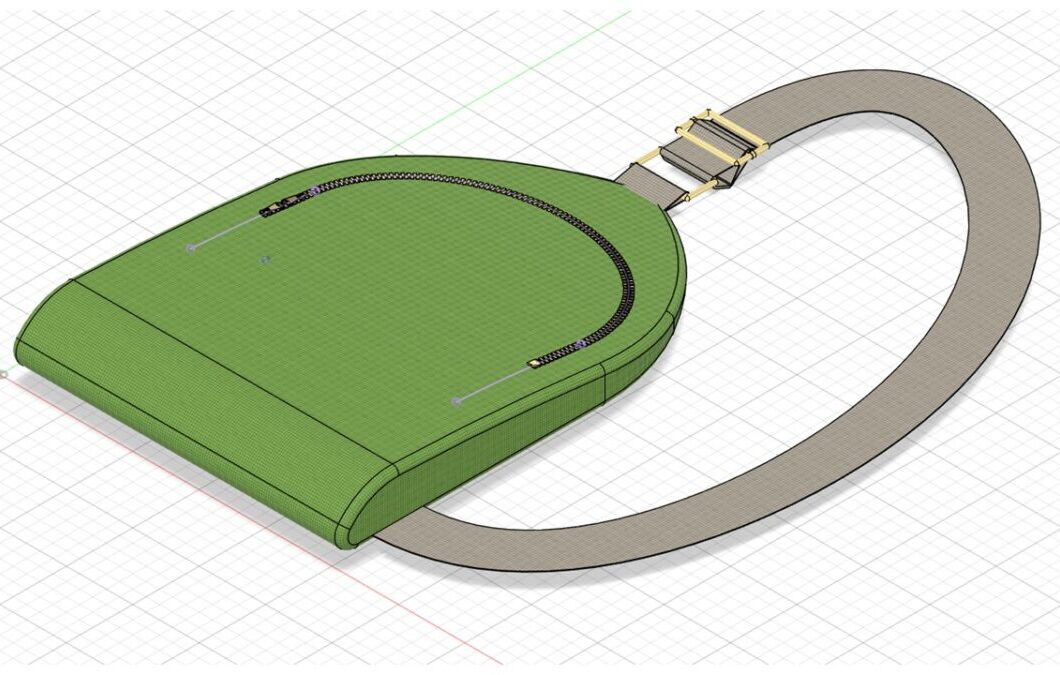 最後は、1年生 八尾 拓樹さんの「わたしのバッグ」です。こちらも曲面が多い難しい形状をバランス良くモデリングしてあります。ファスナーやベルト金具などの細かい部分まで、しっかりと作成してあります。ベルトを金具に通したり、バッグに固定したりする箇所のモデリングも複雑な操作が必要だったと思います。授業内で教えてもらっていない、機能や操作が必要な場面も多くあったでしょう。それらを自分で調べて、学び、成果が出た経験は、今後の他の課題でも役に立つことと思います。ベルトの曲げ方を3次元的に(奥行き方向に曲げる)すれば、もっとリアルに見えますので、ぜひ挑戦してみて欲しいと思います。
最後は、1年生 八尾 拓樹さんの「わたしのバッグ」です。こちらも曲面が多い難しい形状をバランス良くモデリングしてあります。ファスナーやベルト金具などの細かい部分まで、しっかりと作成してあります。ベルトを金具に通したり、バッグに固定したりする箇所のモデリングも複雑な操作が必要だったと思います。授業内で教えてもらっていない、機能や操作が必要な場面も多くあったでしょう。それらを自分で調べて、学び、成果が出た経験は、今後の他の課題でも役に立つことと思います。ベルトの曲げ方を3次元的に(奥行き方向に曲げる)すれば、もっとリアルに見えますので、ぜひ挑戦してみて欲しいと思います。
1年生 八尾さんコメント
制作時間:1日少しずつ作業して、3日か4日くらいかかりました。
コメント:カーブしたファスナーと、ベルト金具部分の形状にこだわりました。
受賞作のみ、解説をしましたが、受賞とはならなかった他の作品もとても素晴らしかったです。「お出かけに持って行くもの」がテーマということで、バッグや眼鏡、スマホ、ポータブルバッテリーなどが多かったのですが、留学生は2名とも「ナイフ」をモデリングしていました。人間本来のお出かけして生きていく力を感じましたし、大自然の中で役に立ちそうな良い形状でした。来年も継続してコンテストを開催していきますので、学生たちの3DCADスキルのさらなる向上に期待しています。
林 道大

I am Michihiro Hayashi, advisor for the Design & Fabrication Club. This year, as part of the summer vacation assignment, students worked on 3D CAD modeling. The theme was “Things to Take on an Outing”. There were more than 30 submissions from 1st and 2nd year students. The submissions covered a wide range of genres—if you took all of them on a trip, it would surely be a fun and convenient excursion! After careful evaluation by the judges, four outstanding entries were selected for awards.
Let’s take a closer look at the award-winning pieces.
 2nd year student Madoka Nakazawa: My Smartphone
2nd year student Madoka Nakazawa: My Smartphone
Although the geometric shape of a smartphone is simple, this model is highly decorated. Using a combination of arcs and straight lines, the student skillfully recreated a cute character. The bead strap is well represented, and even the shining sun—usually difficult to model in CAD—was given a hand-drawn look. The cracked screen detail was an impressive touch.
Comment from Madoka
Production time: Worked a little each day, about a week in total.
Focus points: Paid attention to details like the camera lens area and the character’s facial expression. The cracked screen is definitely the highlight.
 1st year student Taiki Sasaki: My Glasses
1st year student Taiki Sasaki: My Glasses
This model of eyeglasses is extremely realistic—almost like something from an optical shop catalog. Not only the overall shape, but also the rims, bridge, end pieces, nose pads, hinges, and temples were faithfully reproduced. Even the complex curved surfaces were carefully modeled. Wearing these glasses might make you feel smarter—perhaps reflecting the creator’s intention.
Comment from Taiki
Production time: About 6 hours.
Focus points: Closely observed my own glasses, especially the three-dimensional feel of the rims that hold the lenses.

1st year student Reo Sakai: My Lantern
The overall shape is well balanced, and the model includes functional details such as the mechanism for lighting and extinguishing the lantern, the fuel compartment, and the screw-on lid. These were created so their functions could be explained clearly. If the flickering flame inside a dim tent were rendered in CG, it would make a stunning video—possibly even a top entry in a CG contest.
Comment from Reo
Production time: Worked 2–3 hours a day for 2–3 days.
Focus points: Paid attention to texture settings and the screw shape of the lid. The lid could probably be 3D printed and used in real life.
 1st year student Hiroki Yatsuo: My Bag
1st year student Hiroki Yatsuo: My Bag
This piece features many curved surfaces, which are difficult to model, yet they are well balanced. Details such as zippers and metal buckles were carefully crafted. Modeling the parts where the belt passes through the buckle and attaches to the bag required complex operations. There were likely many functions and techniques not taught in class, so the student must have researched and learned independently—a valuable experience for future projects. If the belt were bent three-dimensionally (with depth), the model would look even more realistic, so I encourage trying that next time.
Comment from Hiroki
Production time: Worked a little each day, about 3–4 days in total.
Focus points: Focused on the curved zipper and the shape of the belt buckle.
Although I only introduced the award-winning works, the other submissions were also excellent. Since the theme was “Things to Take on an Outing,” many students modeled bags, glasses, smartphones, and portable batteries. Interestingly, international students chose to model knives, perhaps reflecting humanity’s innate survival instincts and the usefulness of such tools in nature.
I plan to continue this contest next year and look forward to seeing even greater improvements in students’ 3D CAD skills.
Michihiro Hayashi
 こんにちは。白山麓事務室の間加田 侑里です。秋の涼しさを感じる季節となりました。今回は9月に行われた様々な課外活動について紹介します。
こんにちは。白山麓事務室の間加田 侑里です。秋の涼しさを感じる季節となりました。今回は9月に行われた様々な課外活動について紹介します。
「国語じゃなくて日本語」
2025年9月17日(水)、筒井先生主催「国語じゃなくて日本語」と題した特別講義が開催されました。筒井先生は、英語を母国語或いは第一言語としている学生たちに、第二言語(外国語)として、日本語プログラムを開講しています。
今回行われた「国語じゃなくて日本語」は、日本語母語話者向けの講義で、私たちが普段何気なく使っている日本語にも、言葉の使い分けや文法項目に難しさがあることを確認しました。講義ではそれらの点を取り上げ、語の働きがどのような意味を生み出すのかについて考察しました。
筒井先生より、「国語や文法が苦手だという学生もいましたが、みんな積極的に参加してくれました。全員が自ら考え、グループディスカッションを通じて気づきを得たり、理解を深めたりしている様子が見られました。私自身も、学生の取り組みや発言から新たな気づきを得ることができました。今回は時間が足りず、メインとして予定していた「は」と「が」の違いについては扱えなかったため、後学期に第二弾として実施することにしました。次回も、ぜひ多くの学生に参加してもらえたら嬉しいです。」とのコメントがありました。
「フラワーアレンジメント・華道教室」
2025年9月19日(金)、宇都宮 隆子先生と黒田 譜美先生主催の「フラワーアレンジメント・華道教室」が開催されました。本校の華道講座講師の南川 和美先生をお招きしました。
まず初めに、クルクマや薔薇、スターチス使ったフラワーアレンジメントを行いました。南川先生からハサミの使い方や水切りの方法を教わった後、学生たちは専用のスポンジに花の特徴や色合いを活かしながら、思い思いの作品を仕上げました。
次に、3グループに分かれ、剣山と水盤を使って、まめ、ゆり、ひまわり、スペラス、ヒオウギ、ピンクッションなどを用いて本格的な華道に挑戦しました。学生たちは南川先生のお手本を参考にしながら、花材の高さや角度を調整しながら、全体のバランスを意識して作品を仕上げていきました。それぞれのグループが異なるテーマを持ち、個性豊かな作品が並びました。
学生たちは「いろんなお花を知ることが出来たし、綺麗に仕上がって嬉しかった」などといった声が上がりました。学生たちの作品は、白山麓キャンパスの玄関や共有スペースに展示され、校内は華やかな雰囲気となりました。
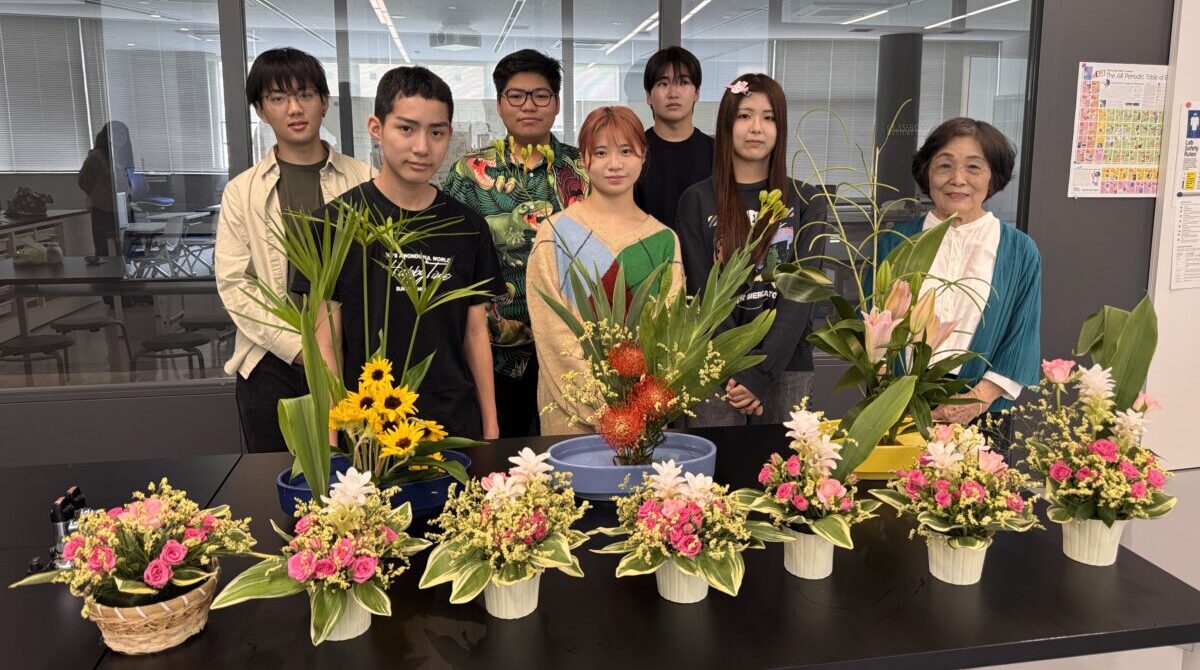
「Career Support for KOSEN Students」
2025年9月19日(金)、1・2年生を対象にOLIENT TECH株式会社 太安 竜也氏をお招きし、「Career Support for KOSEN Students」が実施されました。
高等専門学校(高専)を卒業した後の進路には、大きく分けて「就職」と「進学」の2つがあります。もともとは就職する学生がほとんどでしたが、近年では進学を希望する学生の割合が増加しています。太安氏より、就職と進学に関するアドバイスや、それぞれのメリット・デメリット、就職活動や勉強の進め方について説明があり、「自分の将来を見据え、早い段階から情報を集め、準備を進めることが、納得のいく就職・進路選択につながります」と学生たちに呼びかけました。
「The Secret of the Crest Vault: STEM Themed Escape Room」
2025年9月22日(月)、アブワン・ドミソン先生とアブワン・シャルミー先生による「The Secret of the Crest Vault: STEM Themed Escape Room」が開催されました。学生たちは、STEMのパズルやなぞなぞを協力して解き、閉じ込められた部屋から脱出するゲームに挑戦しました。それぞれの課題をクリアするごとに、4桁の暗証番号のうち1つの数字が明らかになり、その数字は「科学」「技術」「工学」「数学」の分野にちなんだものでした。
学生たちは、知識・チームワーク・素早い判断力を活かして、4つの数字を集めて暗証番号を完成させ、見事にドアを開けて脱出に成功しました。優勝チームは、なんと3分48秒で問題を解いたそうです!
「Shall We Dance?」
2025年9月26日(金)、ジャスティン・ハン先生とステファニー・レノルズ先生による「Shall We Dance?」が開催されました。この日、2名のダンス講師と2名のダンス生徒をお招きし、学生たちは4種類の社交ダンス(ワルツ・ブルース・チャチャチャ・ジターバグ)の基本ステップを学びました。通常、これらのダンスでは男性がリーダー、女性がフォロワーの役割を担い、それぞれ異なる補完的な動きをしますが、今回のセッションでは、両方の役割に共通する基本ステップが紹介されました。学生たちは、基本的な動きとカウントを学んだ後、音楽に合わせてペアで練習し、ダンスの楽しさを体験しました。
最初は多くの学生がリズムやステップの動きに苦戦していましたが、練習を重ねることで大きく上達しました。学生たちは社交ダンスを楽しんでいる様子で、中には今後もこの活動を続けられないかと尋ねる声もありました!
「五十嵐威暢アーカイブ」
2025年9月26日(金)、1・2年生5名が金沢工業大学に設立されている「五十嵐威暢アーカイブ」(https://igarashiarchive.jp/?lang=ja)を訪問しました。このアーカイブは、彫刻家・デザイナーの五十嵐威暢氏から寄贈された約5,000点の作品や資料を収蔵し、感性教育を目的として2023年に設立された施設です。
学生たちはギャラリーを見学し、展示作品や作者について説明を受けました。また、ワークショップでは、日常的に使用している小さなアイテムを4つ持参し、方眼紙上に並べて共通点を探しました。色や形、時系列などの観点で整理し、その後、グループごとに思考の違いをまとめる活動を行いました。
この体験を通じて、学生たちは「見る」という行為を通じた観察力や発想力を養いました。
「ソフトバレーボール・バレーボール大会」
2025年9月29日(月)、この日は白山登山・三方岩岳ハイキングが予定されていましたが、あいにくの雨で中止となり、その代わりにフィリップ・ケザウ先生主催の1・2年生と教員が一緒に楽しむ「ソフトバレーボール・バレーボール大会」が開催されました。
まずはソフトバレーボールからスタートしました。7分間の試合が次々と行われ、各チームは声を掛け合いながら、全力でプレーをしていました。続いて行われたのはバレーボールの試合です。スパイクやレシーブが決まるたびに歓声が上がり、熱い応援が飛び交いました。教員と学生が一緒になってチームを組み、互いに声を掛け合いながらプレーする姿は、まさに一体感そのものでした。さらに、参加者全員が2つのチームに分かれて、全員がコートに入ってプレーするオリジナルゲームも実施されました。このゲームでは、最大4回までボールに触れて相手コートに返すという特別ルールが実施され、人数の多さを活かして、みんなで協力しながらボールをつなぎました。最後には、1年生 vs 2年生の白熱した試合が行われました!試合開始とともに、2年生は息の合ったチームワークと力強いプレーで1年生を圧倒!1年生も負けじと果敢に挑みましたが、2年生の連携と集中力に押され、惜しくも敗れてしまいました。
この試合を通して、学年を越えた絆や、全力で挑戦する楽しさを改めて感じることができた、心に残る素晴らしい時間となりました!
「ブックレビュー発表会」
2025年10月1日(水)、1年生による「ブックレビュー発表会」が開催されました。学生たちは夏休み中に読んだ本(ジャンルは自由)について、学んだことや感想を3分間発表しました。日本人の学生は英語の本を読み英語で発表し、留学生は日本語の本を読み日本語で発表しました。学生たちはファンタジーや冒険、伝記、推理小説など、多彩なジャンルの本を紹介しました。中には、本のストーリーをアニメーション化する学生、物語の一場面を鉛筆でスケッチした作品を披露する学生もいました。
発表後、学生と教員による投票が行われ、「ベストプレゼンテーション」が選ばれました。英語での発表から2名、日本語での発表から1名が受賞者として選ばれました。結果は以下の通りです。
ベストプレゼンテーション(英語):笹木 大暉さん
ベストプレゼンテーション(英語):田村 駿多さん
ベストプレゼンテーション(日本語):プルバ・アントニー・レバッタさん
-
Title:おでん (Oden)Title:おでん
-
Anthony received many questions from his classmates about the book he had read.クラスメイトから、アントニーさんが読んだ本についてたくさん質問されました。
-
A big round of applause was given to Anthony, who was able to give his entire presentation in Japanese!日本語を流暢に話すことができたアントニーさんに盛大な拍手が送られました!
間加田 侑里
 Hello, this is Yuri Makada from the Hakusanroku Office. The season has turned to autumn, and we can feel the cool breeze in the air. Today, I’d like to introduce some of the extracurricular activities that took place in September.
Hello, this is Yuri Makada from the Hakusanroku Office. The season has turned to autumn, and we can feel the cool breeze in the air. Today, I’d like to introduce some of the extracurricular activities that took place in September.
Not National Language, but Japanese
On Wednesday, September 17th, 2025, Tsutsui sensei gave a special lecture titled “Not National Language, but Japanese”. Tsutsui sensei teaches a Japanese as a second (foreign) language classes for students whose first language is another language.
This time, however, the lecture was aimed at native Japanese speakers. It focused on the fact that even the Japanese we use casually every day has complexities in word choice and grammatical structures. The lecture explored these points and examined how the function of words creates meaning.
Tsutsui sensei commented: “Some students mentioned that they were not confident in Japanese or grammar, but everyone participated actively. I observed students thinking for themselves, gaining insights, and deepening their understanding through group discussions. I also learned new things from their efforts and comments. Unfortunately, we ran out of time and couldn’t cover one of the main topics, the difference between wa (は) and ga (が) so I plan to hold a second session in the next semester. I hope many students will join us again.”
Flower Arrangement and Ikebana Workshop
On Friday, September 19th, 2025, a Flower Arrangement and Kado Class was held, organized by Takako Utsunomiya sensei and Fumi Kuroda sensei. Kazumi Minamikawa sensei (instructor) led the Flower Arrangement course.
First, students created flower arrangements using summer tulip, roses, and statice. After learning from Minamikawa sensei how to use scissors and cut the flower correctly, students completed their own unique works by arranging flowers on special sponges, making the most of each flower’s characteristics and colors.
Next, students split into three groups and tried authentic Ikebana using a flower frog and a water basin, incorporating materials such as beans, lilies, sunflowers, asparagus, hiogi, and pincushions. Referring to Minamikawa sensei’s examples,
students adjusted the height and angle of the flowers while considering overall balance. Each group had a different theme, resulting in a variety of creative and distinctive works.
Students commented, “I was happy to learn about so many different flowers and to finish something beautiful.” Their works were displayed in the entrance and common spaces of the Hakusanroku Campus, creating a bright and elegant atmosphere throughout the school.

Career Support for KOSEN Students
On Friday, September 19th, 2025, a lecture titled “Career Support for KOSEN Students” was held for 1st and 2nd year students. This lecture was giving by Mr. Tatsuya Taian from OLIENT TECH Co., Ltd.
After graduating from a KOSEN, students generally have two main paths: employment or further education. Traditionally, most students choose employment, but in recent years, the proportion of students aiming for further studies has increased.
Mr. Taian provided advice on both employment and further education, explaining their respective advantages and disadvantages, as well as how to approach job hunting and academic preparation. He concluded his lecture with the following encouraging words for the students: “Looking ahead to your future, gathering information early, and preparing in advance will lead to satisfying career and academic choices.”
The Secret of the Crest Vault: STEM Themed Escape Room
On Monday, September 22nd, 2025, Domyson Abuan sensei and Sharmee Abuan sensei hosted an activity titled “The Secret of the Crest Vault: STEM-Themed Escape Room.” Students worked together to solve STEM-related puzzles and riddles in order to escape from a locked room.
For each challenge they cleared, one digit of a four-digit passcode was revealed, with each digit representing a concept related to Science, Technology, Engineering, or Mathematics.
Using their knowledge, teamwork, and quick decision-making skills, the students successfully gathered all four digits, completed the passcode, and unlocked the door to escape. Impressively, the winning team solved the puzzles in just 3 minutes and 48 seconds!
Shall We Dance?
On Friday, September 26th, 2025, Justin Han sensei and Stephanie Reynolds sensei hosted an activity titled “Shall We Dance?”. On this day, two professional dance instructors and two volunteer dancers were invited, and students learned the basic steps of four types of ballroom dance (Waltz, Blues, Cha-Cha-Cha, and Jitterbug).
In these dances, the usual roles are that men lead and women follow, each performing complementary movements. The Dance instructors focused on teaching the students the steps in each type of dance that are performed by both the leader and the follower. After learning the fundamental movements and counts, students paired up and practiced to music, experiencing the joy of dancing.
Justin sensei commented: “At first, the students struggled with the motions and rhythm of the steps, but as they practiced, they greatly improved. The students expressed their enjoyment of the class while some students even asked about making it more permanent!”
Igarashi Takenobu Archive
On Friday, September 26th, 2025, five 1st and 2nd year students visited the Igarashi Takenobu Archive at KIT. This archive, established in 2023 for the purpose of fostering aesthetic education, houses approximately 5,000 works and materials donated by the sculptor and designer, Mr. Takenobu Igarashi.
The students toured the gallery and received explanations about the exhibited works and the artist. In the workshop, students brought four small everyday items, arranged them on graph paper, and looked for commonalities. They organized the items by aspects such as color, shape, and chronology, and then summarized differences in thinking within their groups.
Through this experience, the students cultivated observation and creativity through the act of “seeing.
Soft Volleyball & Volleyball Tournament
On Monday, September 29th, 2025, a hike to Mt. Hakusan and Mt. Sanpoiwa was originally planned, but due to rain, it was canceled. Instead, a Soft Volleyball & Volleyball Tournament was held, organized by Philip Cadzow sensei, where 1st and 2nd year students and faculty enjoyed playing together.
The event started with soft volleyball. Seven-minute matches were played one after another, with teams giving their all and cheering each other on. Next came the volleyball matches, where every successful spike or receive drew cheers and loud support. Teachers and students teamed up, encouraging each other and playing with a sense of unity. An original game was also introduced, where all participants split into two large teams and everyone joined the court. This game featured a special rule allowing up to four touches before returning the ball to the opponent’s side, making full use of the large number of players and fostering teamwork to keep the ball in play. Finally, an intense match between 1st and 2nd year students took place! From the start, the 2nd years dominated with strong teamwork and powerful plays. The 1st years fought back bravely, but ultimately, the 2nd years’ coordination and focus led them to victory.
Book Review Presentation by 1st Year Students
On Wednesday, September 25th, 2025, a book review presentation was held for 1st year students. The students presented for up to 3 minutes on the books they read during summer vacation (with no restrictions on genre), sharing what they learned and their impressions. Japanese students read English books and presented in English, while international students read Japanese books and presented in Japanese. The students presented about a variety of genres, including fantasy, adventure, biography, and mystery. Some students created animations based on the book’s storyline, while others showcased pencil sketches depicting a scene from the story.
After the presentations, a vote was held among the students and faculty to select the best presentations. Two students were chosen as the winners of the English presentations (Japanese students) and one student was chosen as the winner of the Japanese presentations (International students). The results are as follows.
English Presentation Winner: Taiki Sasaki
English Presentation Winner: Shunta Tamura
Japanese Presentation Winner: Burba Anthony Revatta
-
Title:おでん (Oden)Title:おでん
-
Anthony received many questions from his classmates about the book he had read.クラスメイトから、アントニーさんが読んだ本についてたくさん質問されました。
-
A big round of applause was given to Anthony, who was able to give his entire presentation in Japanese!日本語を流暢に話すことができたアントニーさんに盛大な拍手が送られました!
Yuri Makada










